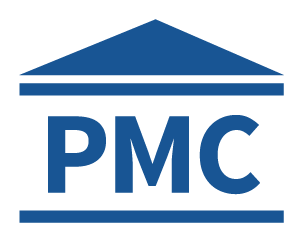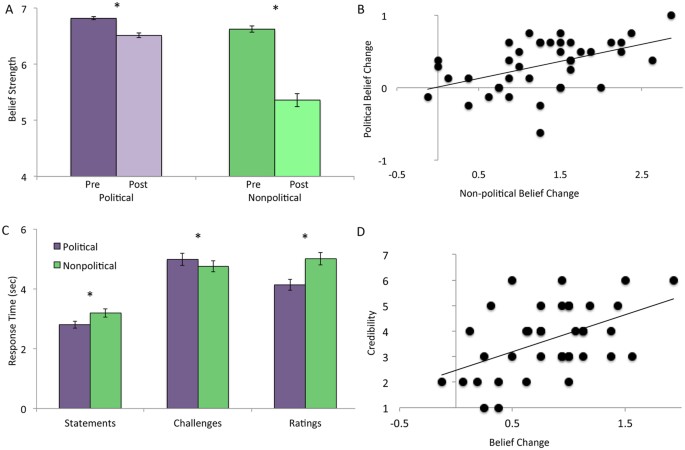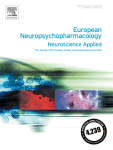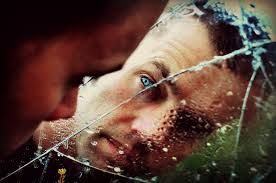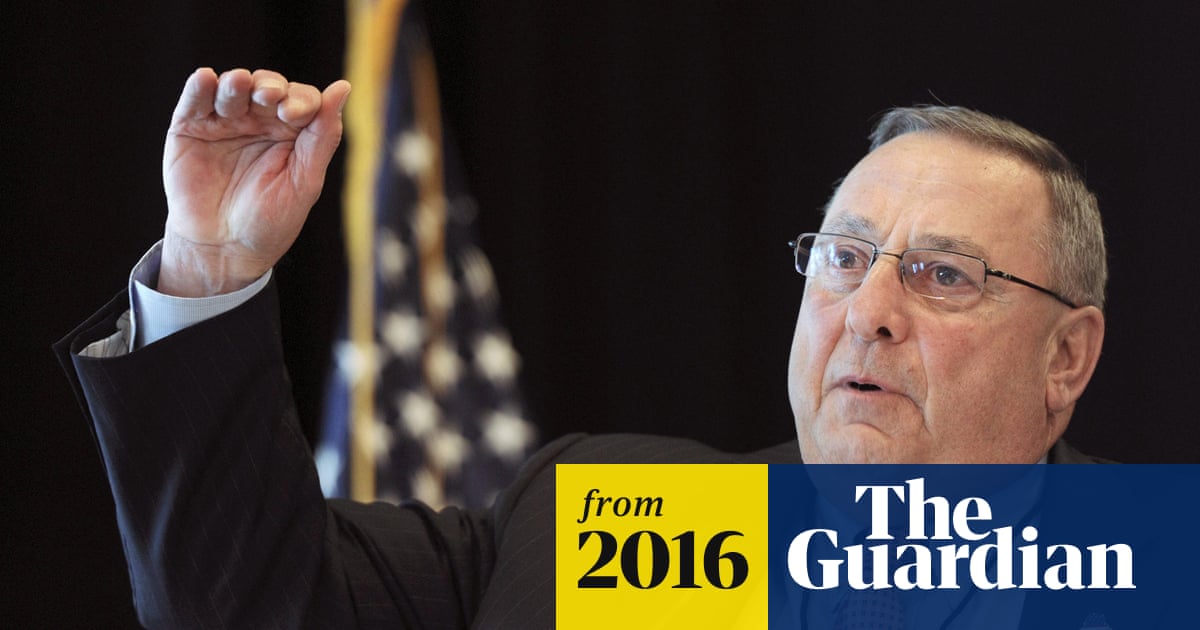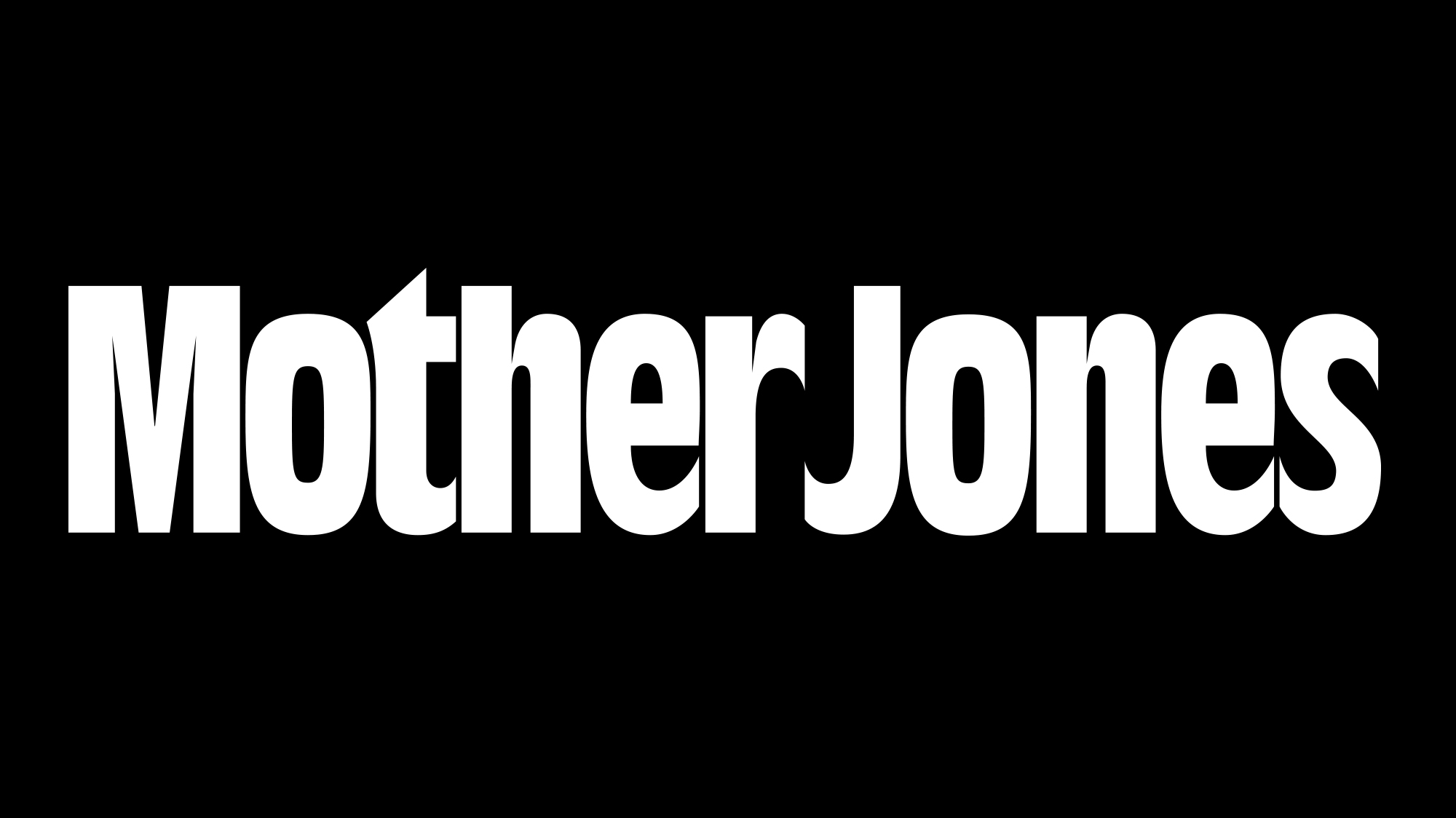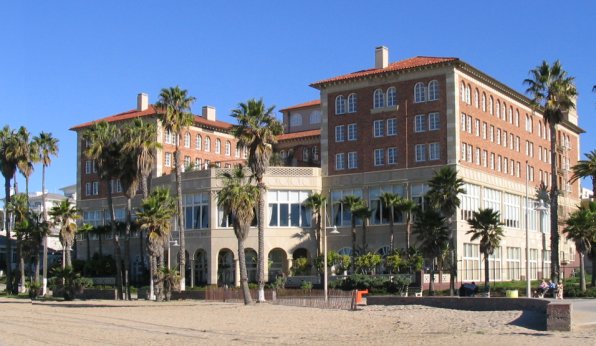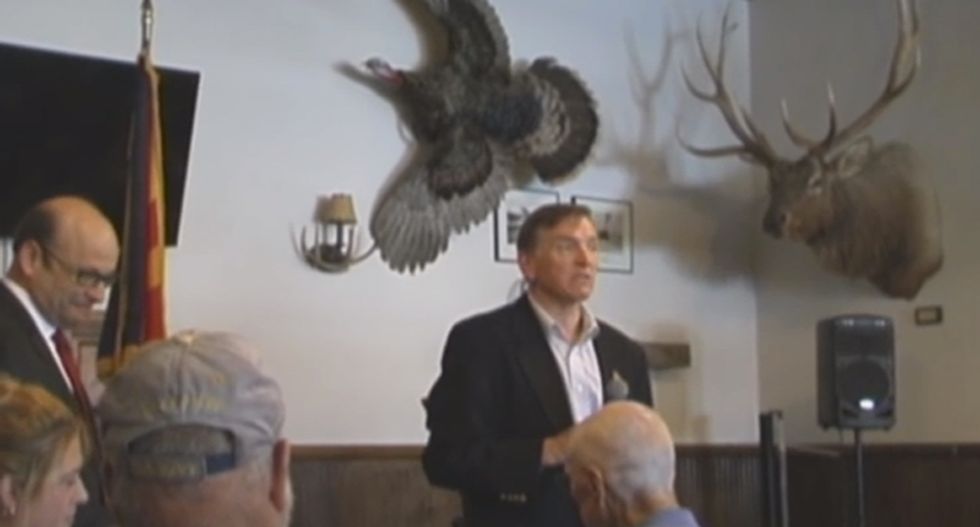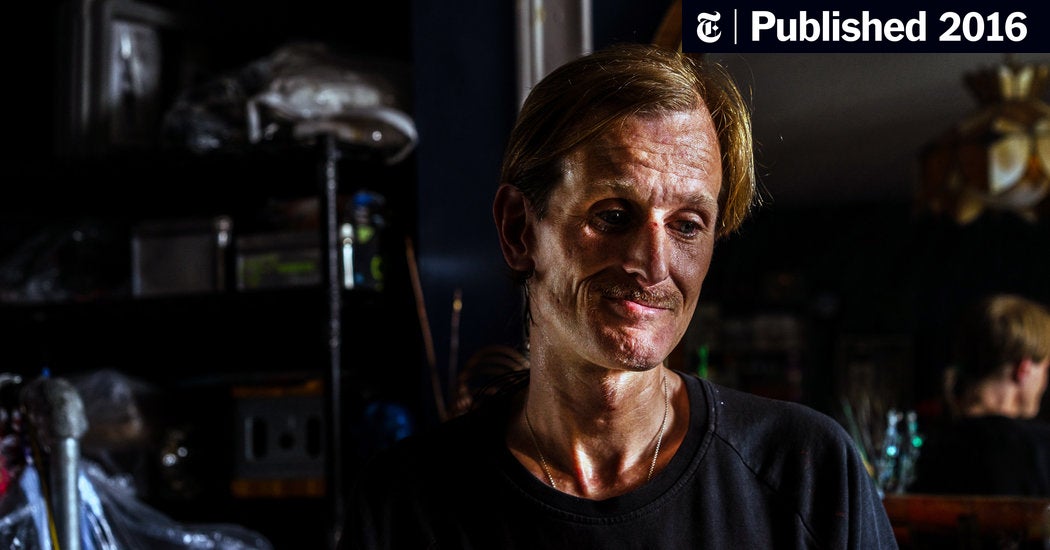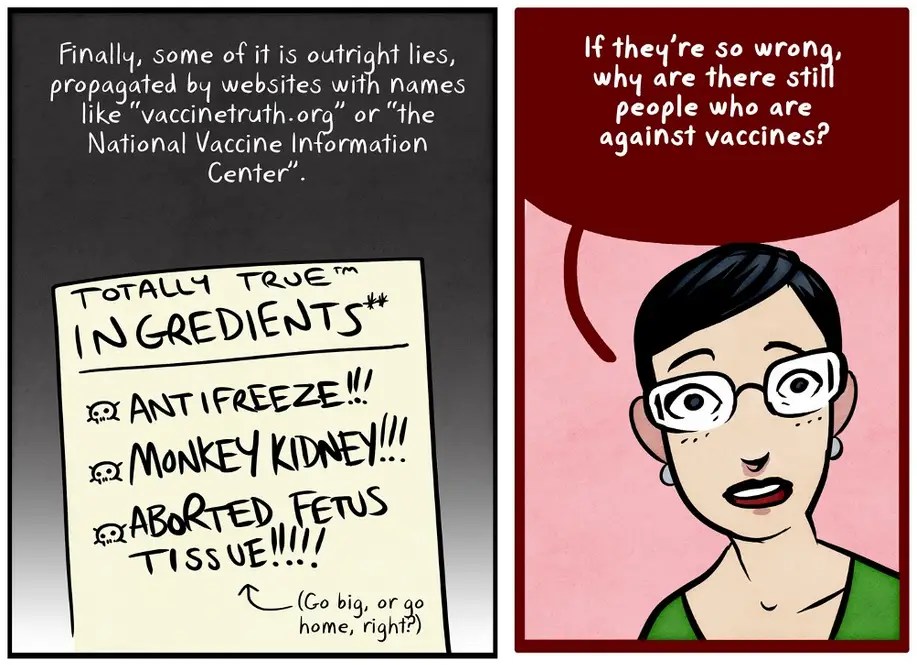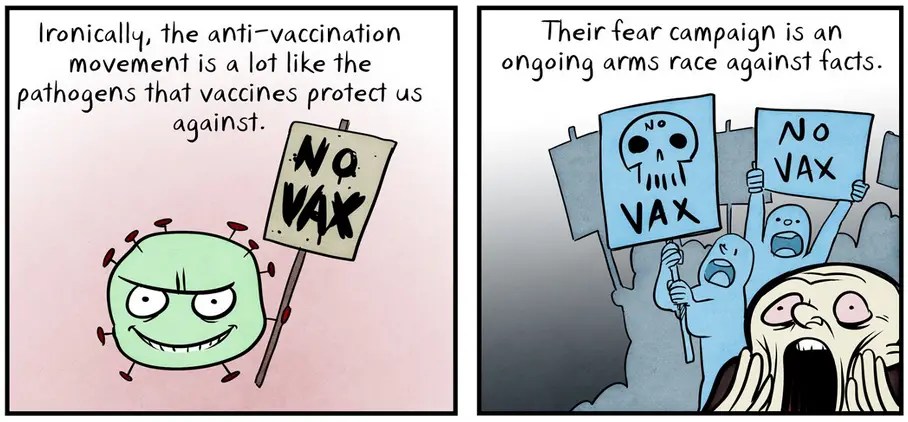boojies
Recruit
★★★★
- Joined
- Jun 28, 2018
- Posts
- 332
To be clear, both the Drug War and the Sex Cult are, by the scientific definition, establishments of religion. The Drug War is a convergence of people manifesting manic psychotic decompensation characterized by their false notion that a themed collection of religious fiction materials is a portal through which we can learn of reality.
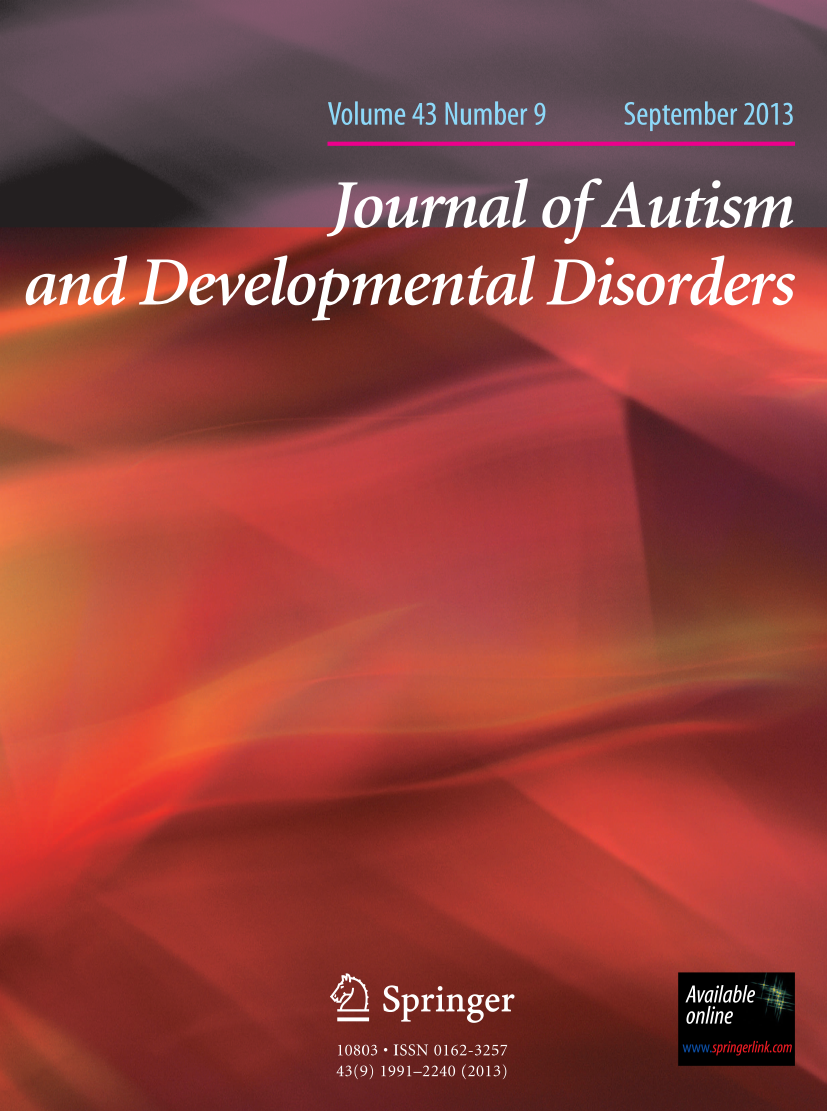
 link.springer.com
link.springer.com
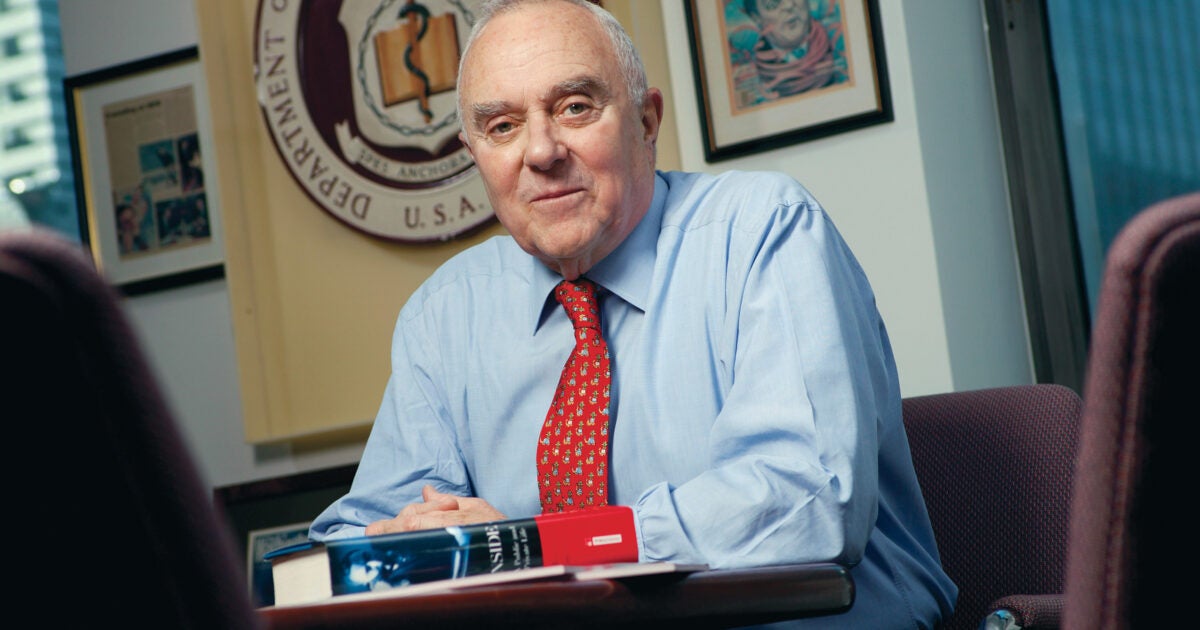
 today.law.harvard.edu
today.law.harvard.edu
 en.wikipedia.org
en.wikipedia.org
Likewise, the Sex Cult is scientifically properly classified as an establishment of religion, for it is a convergence of cognitively anosognosic psychotics manifesting schizophrenia symptomatology in relation to the themed fiction materials of a tradition traced back to schizophrenic delusions.

 www.thetimes.co.uk
www.thetimes.co.uk

The scientific method has refuted the veracity of both of these 20th century neurotypical establishments of religion,
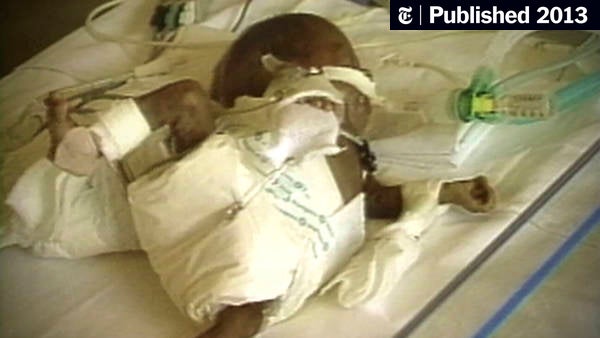
 www.nytimes.com
www.nytimes.com

 www.sciencealert.com
www.sciencealert.com
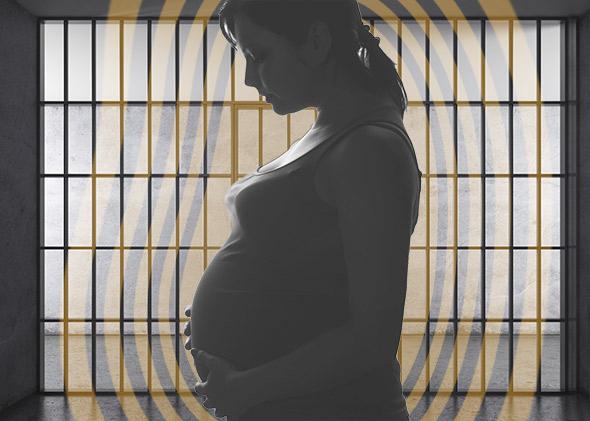
 www.slate.com
www.slate.com
 en.wikipedia.org
en.wikipedia.org
 en.wikipedia.org
en.wikipedia.org


 www.snopes.com
www.snopes.com

 www.snopes.com
www.snopes.com
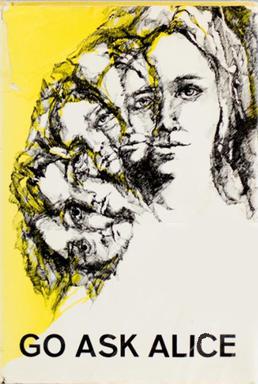
 en.wikipedia.org
en.wikipedia.org
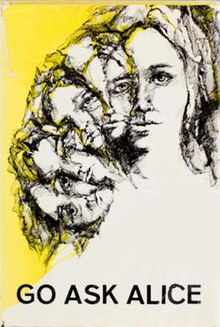

 psmag.com
psmag.com

 www.snopes.com
www.snopes.com

 www.news.com.au
www.news.com.au
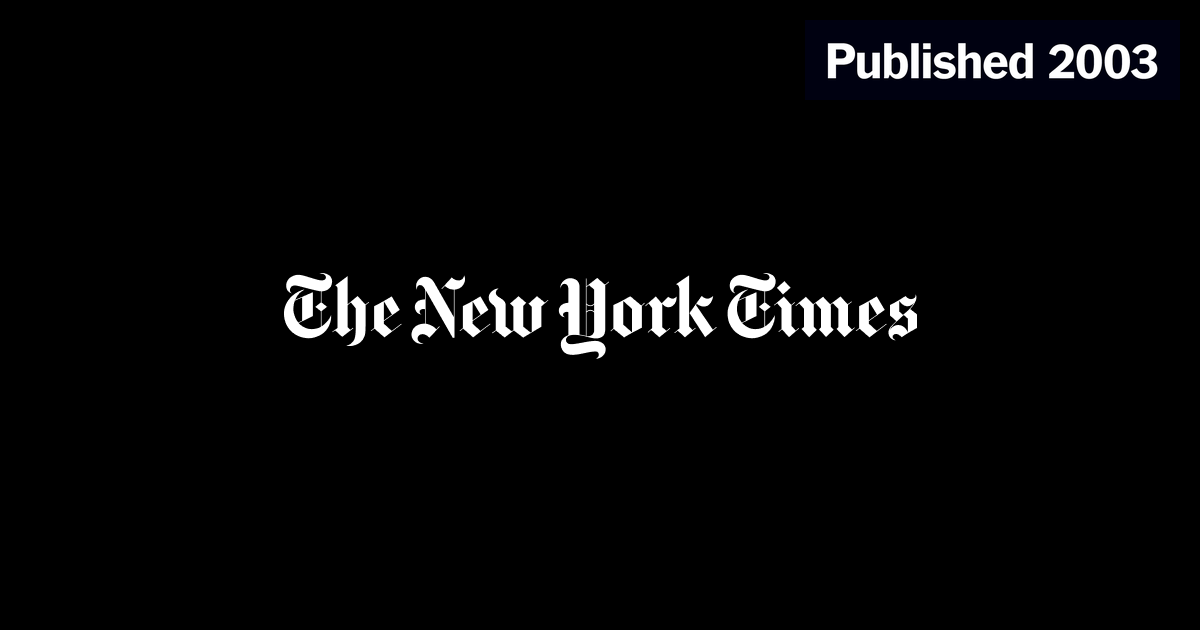
 www.nytimes.com
www.nytimes.com
ipt-forensics.com/journal/volume4/j4_2_1.htm
Our protection from mania and schizophrenia,
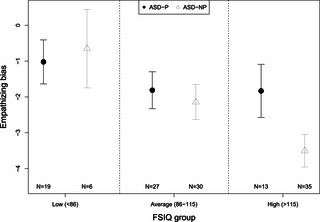
 journals.plos.org
journals.plos.org
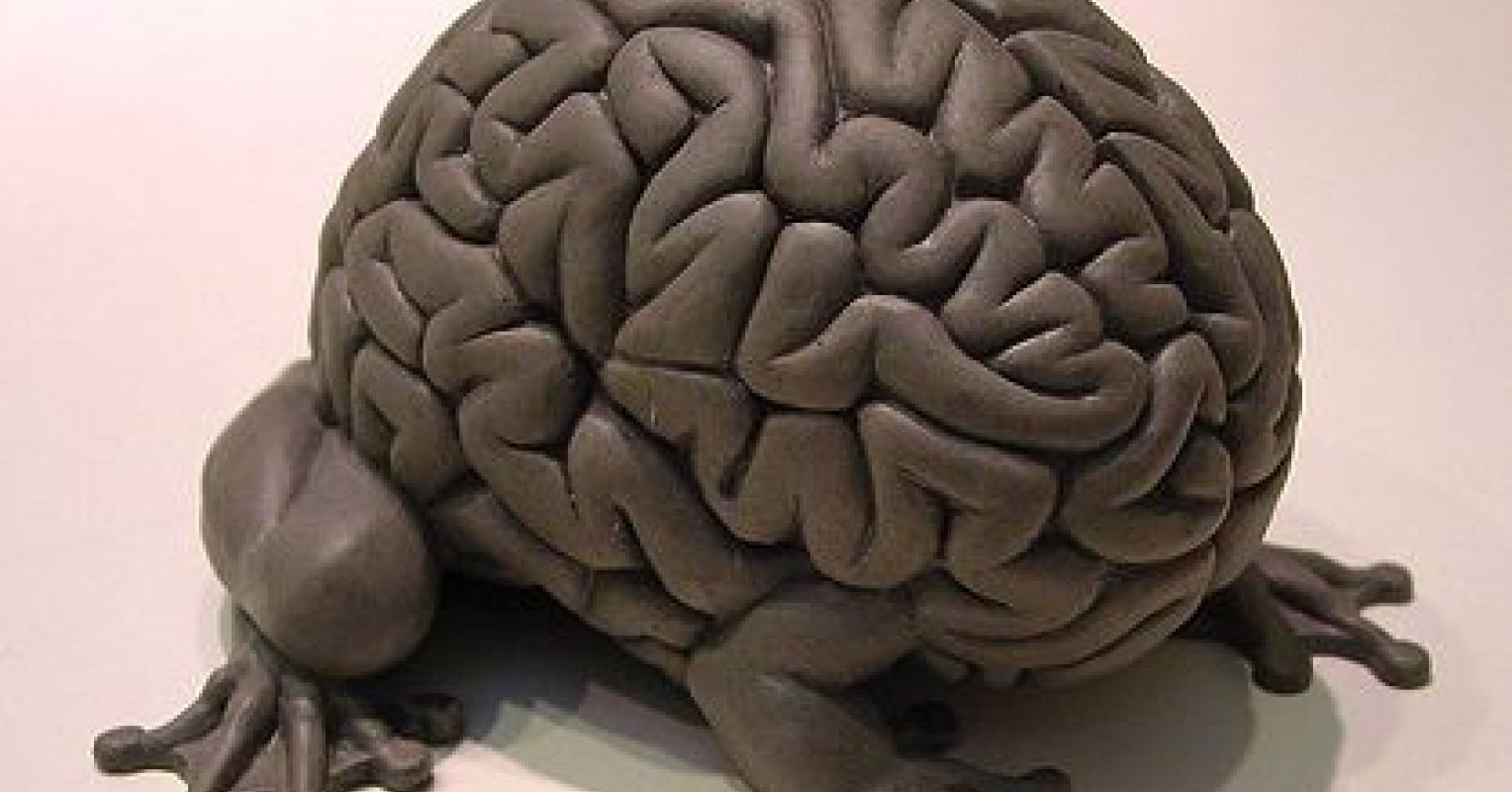
 www.psychologytoday.com
www.psychologytoday.com

 www.newscientist.com
www.newscientist.com

 www.healthline.com
www.healthline.com
Has prohibited us from believing in the fiction materials of these scientifically refuted 20th century neurotypical establishments of religion; consequently, the neurotypicals are systematically enslaving us and ruining our lives for violating the dictates of the themed collections of fiction materials that they reference in place of actual reality or the materials correlated to it.
 richarddawkins.net
richarddawkins.net
The neurotypicals have developed a complex make believe fantasy world described in a themed collection of 20th and 21st century religious fiction materials, and they are systematically enslaving the autistic population for our disbelief in the false reality described in the scriptures of their New Religious Movements.
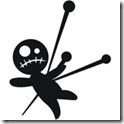

 www.psychologytoday.com
www.psychologytoday.com
You can see the Sex Cultist scripture recited faithfully by the believers in their establishment of religion,
 en.wikipedia.org
en.wikipedia.org
Note that this wikipedia article incorrectly cites the following article by its click bait headline as opposed to by its content which is contrary to its own headline:
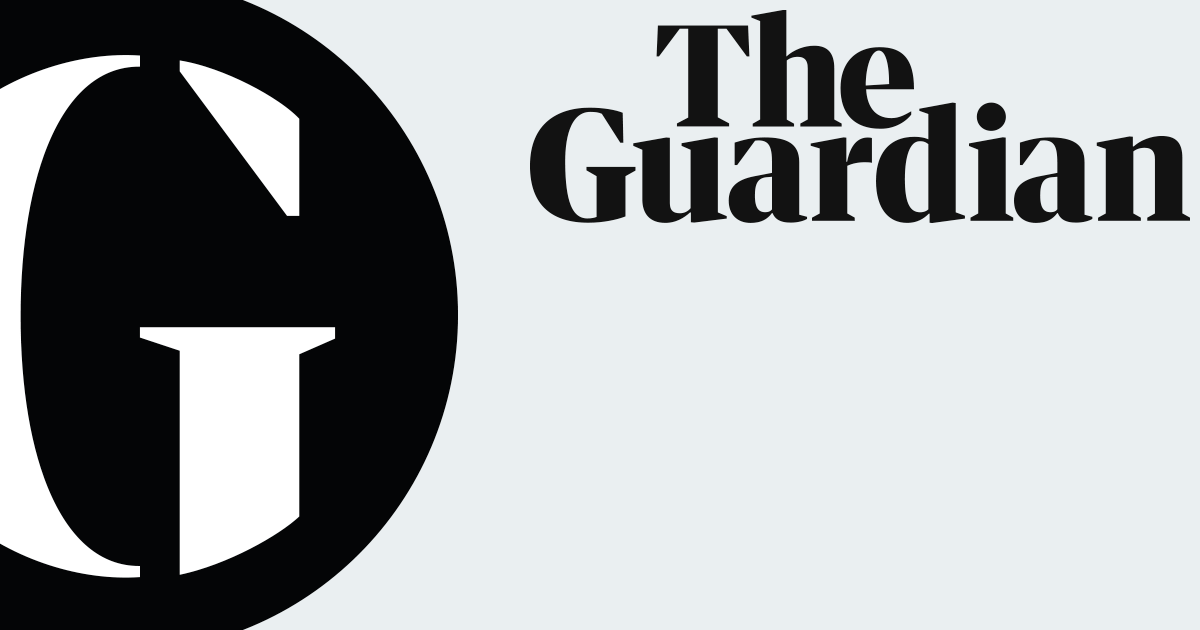
 www.theguardian.com
www.theguardian.com
As you can see they go from saying there was an increase in sex abuse cases caused by the viewing of CP to saying that there was evidence indicating there WOULD BE an increase in sex abuse correlating with the viewing of CP. In reality scientific statistical analyses have determined that there is an inverse correlation between the viewing of CP and the child sexual abuse rate, which supports the substitution hypothesis.
The scientific literature has refuted this religious belief of the neurotypical Sex Cultists.
 onlinelibrary.wiley.com
onlinelibrary.wiley.com
 www.springer.com
www.springer.com
Likewise with the mythical booming bazillion dollar CP industry --- a myth of their religious establishment.
from a self identified feminist journalist:

 www.alternet.org
www.alternet.org
Which cites this seemingly evangelical Christian oriented site:
Which much like this apparently plagiarized paper on feminism,
Cites this now 404 but archived .edu site,
Which cites nothing and is just an ipsedixitism essentially, known to be false to science and investigative inquiry.
 www.eastvalleytribune.com
www.eastvalleytribune.com
Indeed, looking at Dunn his operational history and so on, as a slight aside:

 www.sott.net
www.sott.net
ipt-forensics.com/journal/volume4/j4_2_1.htm
Libertus is down, but archived on the waybackmachine (it includes its citations there),
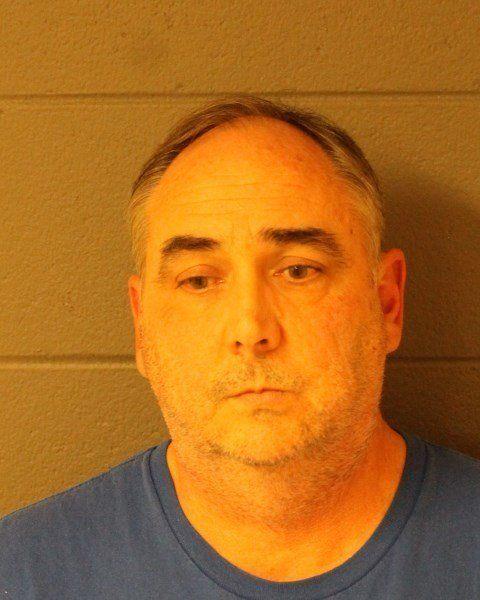
 www.eagletribune.com
www.eagletribune.com
And in our media in general, indeed in such a manner that careful observation can see the flaws in their narrative by observing their failure to keep their scriptures straight over time,
2005:

 womensenews.org
womensenews.org
2006:
2008:

 sd05.senate.ca.gov
sd05.senate.ca.gov
2013:

 www.nbcnews.com
www.nbcnews.com
As a short aside note that the United Nations is essentially a primary base of operations for the Sex Cult:

 www.popsci.com
www.popsci.com
Back on track:
2013 still:

 www.huffingtonpost.com
www.huffingtonpost.com
In 2016 some of the splinter organizations are starting to reject the veracity of the booming multi billion dollar CP industry, for example ICMEC which is a splinter denomination from NCMEC:
As you can see, these people cannot all simultaneously be correct. The United Nations "expert" said that in 2013 CP was a booming 3-20 billion dollar industry, whereas the ICMEC "expert" said that it was over a decade ago that it was a multi-billion dollar commercial enterprise. In reality they are both religiously insane, but their delusional fantasy worlds are incompatible with each other.
Numerous miscellaneous mentions of the booming multi billion dollar CP industry:
 www.eastvalleytribune.com
www.eastvalleytribune.com

 www.eagletribune.com
www.eagletribune.com

 www.frontpagemag.com
www.frontpagemag.com
That the Sex Cultists are insane can be ascertained simply by watching their endless chanting of their scientifically refuted themed collection of fiction materials.


 www.dailyherald.com
www.dailyherald.com
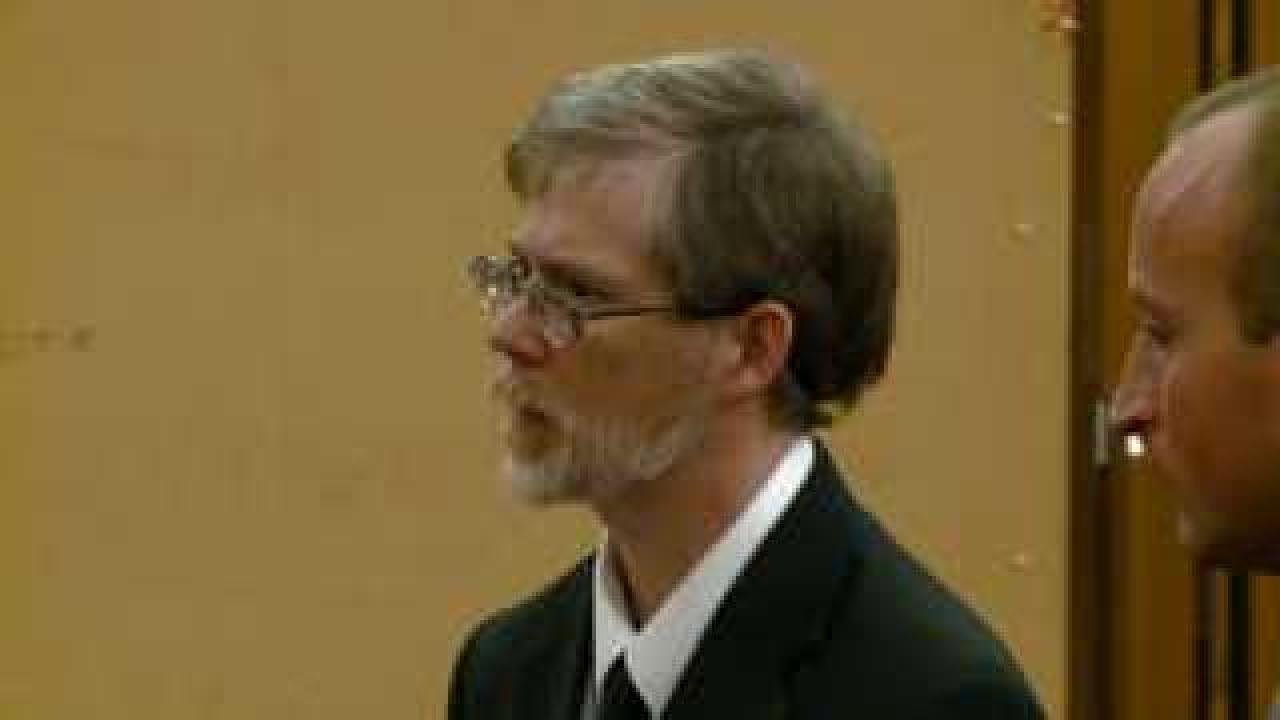
 fox8.com
fox8.com
 www.counselheal.com
www.counselheal.com



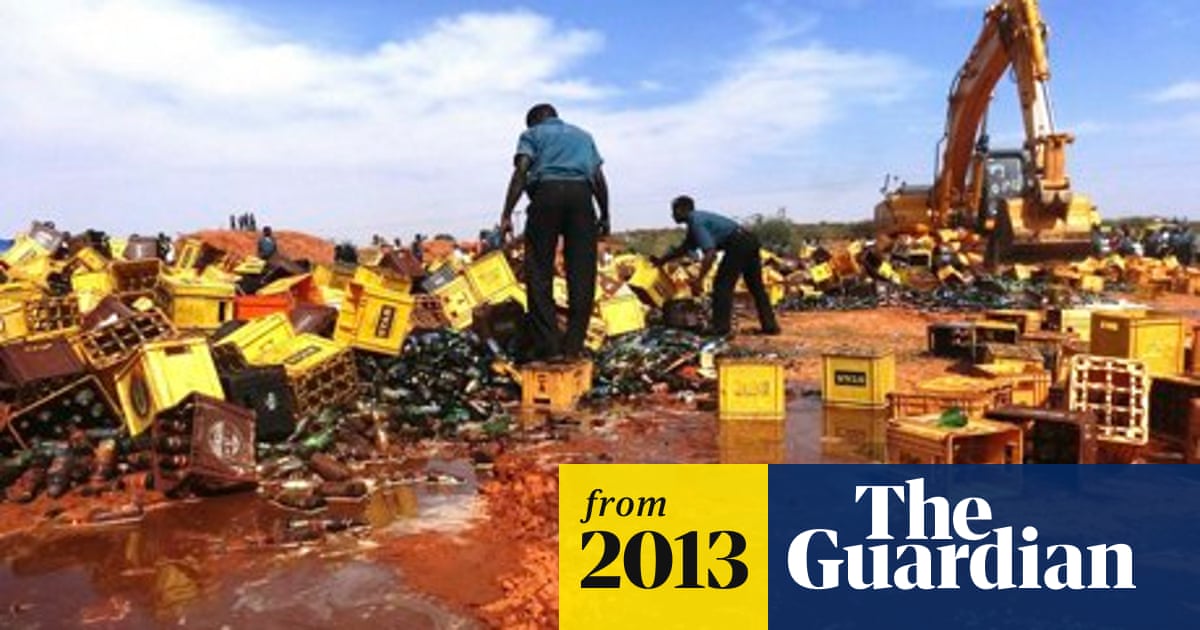
 www.theguardian.com
www.theguardian.com


Look so much like these brain diseased religious terrorists:



 www.timesfreepress.com
www.timesfreepress.com

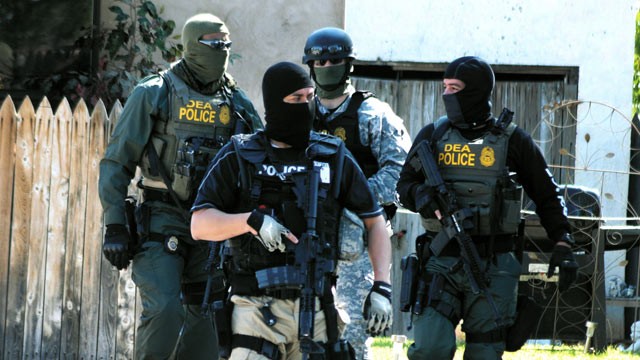
 philosophynow.org
philosophynow.org


 www.psychologytoday.com
www.psychologytoday.com
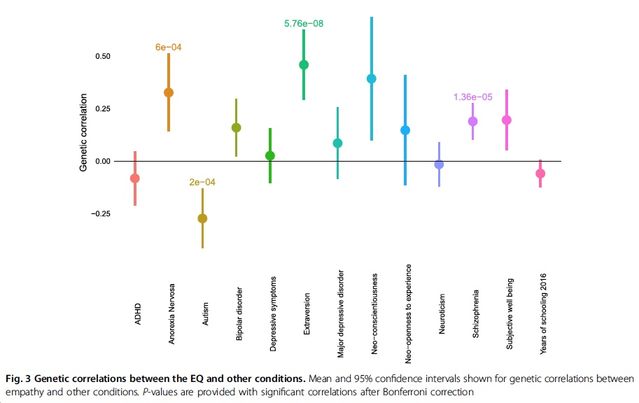
Increased Risk for Substance Use-Related Problems in Autism Spectrum Disorders: A Population-Based Cohort Study - Journal of Autism and Developmental Disorders
Despite limited and ambiguous empirical data, substance use-related problems have been assumed to be rare among patients with autism spectrum disorders (ASD). Using Swedish population-based registers we identified 26,986 individuals diagnosed with ASD during 1973–2009, and their 96,557 non-ASD...
Increased Risk for Substance Use-Related Problems in Autism Spectrum Disorders: A Population-Based Cohort Study
...
In summary, this large population-based study suggests that individuals with ASD have higher risk of substance use-related problems than population controls; most likely because of a shared familial liability for these conditions. An important implication of our findings concerns diagnostics and treatment strategies in ASD. Increased risk of substance-related problems in ASD suggests attention and preventive measures regarding substance use disorder in this population.

Is the war on drugs succeeding? - Harvard Law School
Drug use is down over the last 25 years, but a half million Americans are in prison for drug offenses. How should success be measured?
“If we’re lucky, our grandchildren will recall the global war on drugs of the late 20th and early 21st centuries as some bizarre mania,” says Nadelmann.
Social mania - Wikipedia
Social manias are mass movements which periodically sweep through societies. They are characterized by an outpouring of enthusiasm, mass involvement and millenarian goals. Social manias are contagious social epidemics, and as such they should be differentiated from mania in individuals.
Social manias come in different sizes and strengths. Some social manias fail to 'catch fire', while others persist for hundreds of years (although sometimes in severely attenuated form). Common to all is a vision of salvation, a new way of life, which if realized would radically change everyday life, ushering in a new world of freedom and justice.
The Taiping Rebellion is an excellent illustration, as it was both widespread and destructive and has no modern adherents to whom its use as an example would be a distraction. The Ghost dance which was briefly embraced by Native Americans of the Great Plains in 1890 is another excellent example which may be viewed in some historical perspective, as may The Crusades. Almost any form of religion could be argued to be a long-standing social mania, many of which have persisted through thousands of years.
Likewise, the Sex Cult is scientifically properly classified as an establishment of religion, for it is a convergence of cognitively anosognosic psychotics manifesting schizophrenia symptomatology in relation to the themed fiction materials of a tradition traced back to schizophrenic delusions.

Taboo subject of autism and paedophilia ‘must be tackled to improve lives’
The effects of Asperger’s and autistic spectrum disorder (ASD) on everything from depression to gender dysphoria could be being overlooked, according to a world-renowned expert on the syndrome. Tony
Most controversially, he believes society needs to tackle the taboo subject of ASD and paedophilia. Speaking ahead of World Autism Awareness Day today, he suggested that many inmates in sex offender units, including those convicted of child pornography offences, show signs of Asperger’s or ASD.
Mr. Mahoney said Mr. Lundberg's case is one of many nationwide in which people with autism are prosecuted for child pornography offenses without proper understanding of their mental struggles.
Since the early 1980s, with the breakdown of the Communist empire, sex abusers have become the most common persecutors for paranoids.

Religious people have mental illness, neuroscientist warns
Are you a religious person? Well, if you answer in the affirmative, a neuroscientist says you are mentally unstable! A professor at Stanford University,
www.faceofmalawi.com
A professor at Stanford University, Robert Sapolsky, has said that religion is a mental illness, and that the behaviours exhibited by ‘prophets’ in religious texts are diagnosable acts.
The self-described atheist, who is also a neuroendocrinologist, argues that religion is comparable to a shared schizophrenia.
The scientific method has refuted the veracity of both of these 20th century neurotypical establishments of religion,

Revisiting the ‘Crack Babies’ Epidemic That Was Not (Published 2013)
This Retro Report video lays out how limited scientific studies in the 1980s led to predictions that a generation of children would be damaged for life. Those predictions turned out to be wrong.
This week’s Retro Report video on “crack babies” (infants born to addicted mothers)
lays out how limited scientific studies in the 1980s led to predictions that a generation
of children would be damaged for life. Those predictions turned out to be wrong.
This supposed epidemic — one television reporter talks of a 500 percent increase in
damaged babies — was kicked off by a study of just 23 infants that the lead researcher
now says was blown out of proportion. And the shocking symptoms — like tremors and
low birth weight — are not particular to cocaine-exposed babies, pediatric researchers
say; they can be seen in many premature newborns.

There's No Evidence Heavy Marijuana Use Causes a Drop in IQ
A 2012 study linking persistent cannabis use to neuropsychological decline has been discredited. In a study published in the journal PNAS in 2012, scientists from Duke University in the US reported that cannabis had a neurotoxic effect on the adolescent brain, causing a loss of up to 8 IQ...
In a study published in the journal PNAS in 2012, scientists from Duke University in the US reported that cannabis had a neurotoxic effect on the adolescent brain, causing a loss of up to 8 IQ points in the heaviest users. They found that IQ, learning, memory, and executive functions all declined in heavy users who started smoking before the age of 18.
The research was part of a longitudinal study of 1,037 New Zealand children born between 1972 and 1973. Health, intelligence and behaviour measures were taken periodically on all participants, most recently at the age of 38.
The scientists warned that there may be other explanations for their findings and that they could not "definitively attest to whether this association [between persistent cannabis use and IQ decline] was causal". The study did rule out factors such as years of education, schizophrenia, hard-drug and alcohol dependence, but did not account for other relevant factors such as childhood trauma.
A study published in PNAS six months after the original research questioned the methodology, saying: "Although it would be too strong to say that the results have been discredited, the methodology is flawed and the causal inference drawn from the results premature."
The researchers argued that if you take into account the effects of socioeconomic status on IQ, the decline in IQ due to cannabis use is overestimated by the previous study - and could in fact be zero.
A new study by the University College London has now shed further light on the Duke University findings. This study drew on a larger sample of adolescents; 2,612 UK children born between 1991 and 1992. They found that heavy cannabis use was in no way linked to IQ decline, although alcohol use was strongly correlated with IQ loss in eight to 15 year olds.

The Crack Baby Hysteria of the 1980s Was Completely Unfounded. Now, We’re Repeating It.
In 1985, as crack cocaine use was surging in American cities, the New England Journal of Medicine published a provocative study. Based on preliminary...
Oxytots
Instead of learning from the unfounded hysteria of the crack baby era, we’re repeating it.
Prenatal cocaine exposure - Wikipedia
Prenatal cocaine exposure (PCE), theorized in the 1970s, occurs when a pregnant woman uses cocaine and thereby exposes her fetus to the drug. "Crack baby" was a term coined to describe children who were exposed to crack (freebase cocaine in smokable form) as fetuses; the concept of the crack baby emerged in the US during the 1980s and 1990s in the midst of a crack epidemic.[1] Other terms are "cocaine baby" and "crack kid". Early studies reported that people who had been exposed to crack in utero would be severely emotionally, mentally, and physically disabled; this belief became common in the scientific and lay communities.[1] Fears were widespread that a generation of crack babies were going to put severe strain on society and social services as they grew up. Later studies failed to substantiate the findings of earlier ones that PCE has severe disabling consequences; these earlier studies had been methodologically flawed (e.g. with small sample sizes and confounding factors). Scientists have come to understand that the findings of the early studies were vastly overstated and that most people who were exposed to cocaine in utero do not have disabilities.[1]
Erowid LSD (Acid) Vaults: Health: Myth: LSD and Chromosome Damage
A brief description of the erroneous science bubble that occurred around the issue of LSD causing chromosome damage between 1967 and 1971
erowid.org
The Albert Hofmann collection contains nearly seventy articles on the topic of whether or not LSD-25 causes "chromosome damage". These articles are a good example of the scientific and cultural moral panic that took place in the late 1960s and early 1970s.
In 1967, Science published an article, based on the examination of a single patient, which proposed that LSD caused chromosome breakage.1 As Peter Stafford notes in Psychedelics Encyclopedia, "By evening, the charge that LSD could break chromosomes was in all the nation's media."
Between 1967 and 1972, article after article was published, in respected peer-reviewed journals, describing the link between LSD and chromosomal damage, both in vitro and in users and their offspring. As these reports accumulated, popular media amplified the scare, leading to sensational articles decrying the mutations that would be unleashed on future generations.
"New research finds [LSD] is causing genetic damage that poses a threat of havoc now and appalling abnormalities for generations yet unborn."2
Yet, by the mid-1970s, the tide had turned and the scientific literature generally supported the revised opinion that LSD does not cause chromosomal breakage or birth defects.
How was it possible for this issue to progress as far as it did? In an atmosphere friendly to reports of negative consequences of LSD use, a litany of elementary scientific and research errors were ignored by the journals that published the findings. It wasn't until enough research could be conducted to counteract the initial momentum that saner opinions, and better science, prevailed.
In the collection is a copy of one of the key articles that helped end the hysteria that was taking place in peer reviewed journals and the media. The authors conclude that:
"From our own work and from a review of the literature, we believe that pure LSD ingested in moderate doses does not damage chromosomes in vivo, does not cause detectable genetic damage, and is not a teratogen or a carcinogen in man. Within these bounds, therefore, we suggest that, other than during pregnancy, there is no present contraindication to the continued controlled experimental use of pure LSD."3
The progression of this issue and its related articles is a perfect example of how dozens of journal references supporting one position may still be wrong. In many cases, only time and the evolution of knowledge can sort it out.
It would be interesting to read a retrospective on this part of psychedelic research history.
Retracted article on dopaminergic neurotoxicity of MDMA - Wikipedia
"Severe dopaminergic neurotoxicity in primates after a common recreational dose regimen of MDMA[nb 1] ("ecstasy")",[1] was a paper by Dr. George Ricaurte which was published in the leading journal Science, and later retracted. The reason was that instead of using MDMA, methamphetamine had been used in the test.[2]
...
Another remarkable aspect of this episode is the public endorsement of the study, at the time of its publication, by Alan Leshner, chief executive of the AAAS and former director of NIDA. It isn't clear why an officer of the AAAS should be involved at all in publicly promoting a particular result published in its journal, least of all one whose outcome was questioned at the outset by several experts. The AAAS issued the retraction late in the afternoon on Friday 5 September, resulting in low-key media coverage, which contrasts sharply with the hype surrounding the initial paper.
...
In an interview in The Scientist[13] British scientists Colin Blakemore and Leslie Iversen described how they expressed concerns about the article with editors at Science. "It's an outrageous scandal," Iversen told The Scientist. "It's another example of a certain breed of scientist who appear to do research on illegal drugs mainly to show what the governments want them to show. They extract large amounts of grant money from the government to do this sort of biased work."
Upon results of the review, Research Triangle Institute asserted it was impossible the vials had been mislabeled as all other vials in suspect lots were properly labeled by labeling machines and it was not possible some vials had been mislabeled while others had not as the machines use printed rolls of labels. Many have asserted Ricaurte switched the labels in order to insure the continuation of funding and his results were fraudulent rather than mistaken. NIDA and AAAS are also suspected of aiding in the fraud.[14]
LSD and other psychedelics not linked with mental health problems, analysis suggests
The use of LSD, magic mushrooms, or peyote does not increase a person’s risk of developing mental health problems, according to an analysis of information from more than 130,000 randomly chosen people, including 22,000 people who had used psychedelics at least once. The researchers found no link...
www.sciencedaily.com
The use of LSD, magic mushrooms, or peyote does not increase a person’s risk of
developing mental health problems, according to an analysis of information from
more than 130,000 randomly chosen people, including 22,000 people who had used
psychedelics at least once. The researchers found no link between the use of
psychedelic drugs and a range of mental health problems. Instead they found some
significant associations between the use of psychedelic drugs and fewer mental
health problems.

Orange Juice LSD Man
Rumor: Excessive LSD use left a young man in a psychiatric hospital, believing himself to be a glass of orange juice.
 www.snopes.com
www.snopes.com
Claim: Excessive LSD use left a young man in a psychiatric hospital, believing himself to be a glass of orange juice.
LEGEND
Origins: The “orange juice man” was one of the 1960s’ most ubiquitous pieces of LSD scarelore. As improbable and wacky as it may seem today, this tale was taken quite seriously by the anti-drug forces in the mid-1960s, when the long-term effects of LSD use were unknown. As Jay Stevens wrote a couple of decades later:
Halting the spread of LSD had become part of the national agenda; thus it was necessary for the press to sensationalize the subject … the LSD psychotic … seized the public imagination and didn’t let go for the rest of the decade. Scarcely a week went by that this curious creature wasn’t in the news columns, either raping or murdering or committing suicide in stories that were usually anonymous, uncheckable, and bizarre.
LSD Users Stare at Sun
College students tripping on LSD stared at the sun until they went blind?
Claim: Several students tripping on LSD stared at the sun until blinded.
Status: False.
Origins: This Sun legend, one the 1960s' most ubiquitous pieces of drug scarelore
(along with "teenager on acid trip thinks he can fly and jumps out window") was
nothing but pure hoax. Nonetheless, the national print media fell for it twice.
This twisted tale was born on Thursday, 18 May 1967, when California newspapers
began reporting a horrific tale concerning some Santa Barbara college students
who damaged their eyes by staring at the sun while they were under the influence
of LSD. Here's how the story was written up by the Los Angeles Times

Go Ask Alice - Wikipedia

Go Ask Alice is a 1971 fiction book about a teenage girl who develops a drug habit at age 15 and runs away from home on a journey of self-destructive escapism. Attributed to "Anonymous", the book is in diary form, and was originally presented as being the edited "real diary" of the unnamed teenage protagonist.[1][2] Questions about the book's authenticity and true authorship began to arise in the late 1970s, and it is now generally viewed as a work of fiction written by Beatrice Sparks, a therapist and author who went on to write numerous other books purporting to be real diaries of troubled teenagers.[2][3][4][5][6] Some sources have also named Linda Glovach as a co-author of the book.[1][7]

Satan Has No Interest in Molesting Your Kids
The Satanic panic of the 1980s bedeviled our conceptions about childcare and family. Today, The Satanic Temple lobbies for children’s rights. By Malcolm Harris
Victorian-style devil outrage reached a fever pitch in the family-values 1980s. In his 2015 book We Believe the Children: A Moral Panic in the 1980s, author Richard Beck tells the story of a series of allegations of ritualized Satanic child abuse in daycare centers around the country. Through painstaking elicitation, police, prosecutors, and investigators managed to get children to testify to all sorts of unthinkable violations. Not just sexual assault: There were allegations of gamified animal torture and vast networks of child porn production and distribution. And, of course, the devil.
I asked Beck if in all his exhaustive research he had been able to track down a single instance of verified Satanic ritual child abuse. “No,” says. “My editor and I joked that the book would sell better if I could find an actual case, but as far as I could find it never happened.” Since they didn’t occur in reality, the infernal elements had to be products of adult interpretation and suggestion. Yet whole municipalities managed to convince themselves that there were hidden networks of devil worship and child abuse in their own backyards. How did they accomplish such a feat?

Couple Exonerated in 'Satanic Panic' Child Ritual Abuse Case
What caused the "Satanic Panic" phenomenon begin in the 1980s, and how did a husband and wife daycare team get swept into the center of it?
At trial, Dr. Noblitt testified about the existence of cults using ritual abuse and of organized satanic networks engaged in wide-ranging criminal enterprises including child abuse. The picture painted by Dr. Noblitt in his testimony at trial is one where criminal cults are common across the United States, and that these alleged cults typically engage in torture and murder of both adults and children. Furthermore, Dr. Noblitt opined that these cults are experts in a form of mind control or brainwashing in which victims are so heavily traumatized that they develop total and complete amnesia until the victim enters therapy and recovers the memory. His descriptions of these cults involved rape, murder, torture, grave robbing, and ceremonial animal and human sacrifice. Furthermore, he alleged that these activities took place at churches, involved police officers and other professional individuals. Lurid media coverage of this issue at the time additionally invoked the specter of widespread cannibalism. In order to explain the lack of physical evidence for these outrageous crimes, Dr. Noblitt explained to the jury that these cults will frequently lead their victims to believe in something preposterous, so that if they ever told of their tortures the stories would involve elements that would be so far-fetched that the victims would necessarily be disbelieved. This, according to Dr. Noblitt, was done intentionally by the cults as part of the mind control programming in order to discredit their victims.
In an interview shortly after the trial in a local newspaper, Dr. Noblitt was described as having been the prosecution expert witness in many ritual abuse cases, including the Keller case (Dickinson, 1993). He stated in that interview that Dan Keller, while in court, used a mysterious hand signal to mind-control people within the courtroom. Further, he asserted that cults use severe torture on victims and that all memory of the torture is repressed. In a direct quote from this news article, Dr. Noblitt stated: “I believe they use a technique of mind control unknown in legitimate psychology. It’s akin to hypnosis, created through abuse…the state of shock is so severe that it sends the victim into a deep trance state. Then cult members use different signals or triggers…” to control the victims.

Children of Satan: What do their disturbing tales of bloody rituals mean?
IT WAS the chilling story that horrified affluent families in a leafy north London suburb.
In 1983, Judy Johnson, of California, accused a teacher at her son’s preschool of raping him, said faculty members had sex with animals and even claimed the teacher could fly.
Johnson was hospitalised with paranoid schizophrenia and died before the end of the preliminary hearing from problems related to alcoholism. But LA’s Children’s Institute International then interviewed several hundred children about the alleged incident.
The students were coerced through suggestive interview techniques into making bizarre claims including the existence of secret tunnels under the school in which the alleged abuse took place; orgies supposedly conducted in car washes and airports; disturbing games in which children were allegedly photographed nude; mutilation of corpses; blood drinking; baby sacrifice and a flying teacher.
Pazder was consulted by the prosecution as an expert on Satanic ritual abuse and corroborated the claims. All parties in the McMartin preschool trial were acquitted of all charges in 1990.
Dr. Judianne Densen-Gerber Is Dead at 68; Founded Odyssey House Group Drug Program (Published 2003)
Dr Judianne Densen-Gerber, lawyer and psychiatrist who founded drug treatment program Odyssey House and went on to give widely quoted but sometimes disputed testimonyt on subjects like child abuse and pornography, dies at age 68; photo (M)
A 1979 profile in New York magazine quoted Mayor Edward I. Koch as saying that she was ''one of those seminal forces, original, a go-getter.'' He said there were ''few people who can claim as many accomplishments.''
Dr. Densen-Gerber's success at getting government help became her downfall when the state investigated her use of public funds in the early 1980's and found irregularities. She resigned as executive director of Odyssey House in 1983, but remained active in affiliated programs.
Her influence extended to areas like child pornography. In 1977, her testimony that there were 264 monthly publications devoted to the subject helped persuade the House of Representatives to unanimously pass a bill to regulate it.
IPT, the publication of the Institute for Psychological Therapy, reported in 1992 that later government investigations proved her estimates to be exaggerated by ''several orders of magnitude.''
Dr. Densen-Gerber also commented on many other hot issues from a psychiatric point of view.
In 1991, she went to Omaha to testify in court that her interview with a man convinced her he had witnessed four satanic ritual killings. She characterized herself as an expert at deprogramming survivors of satanic cults.
ipt-forensics.com/journal/volume4/j4_2_1.htm
The Origin of the Myths
In 1976 Robin Lloyd, correspondent for NBC, published For Money or Love: Boy Prostitution in America (Out of Print)(Out of Print).18 In the book, for which a U.S. senator had written an introduction, Lloyd claimed that a huge network of prostitution involving 300,000 boys existed. The notion that child pornography trade is big business was initiated in this book. Yet, nowhere in the book is there any empirical basis for the number 300,000. Indeed, Lloyd admitted that it was a working hypothesis which he had suggested to a number of experts to test their reactions.19 This didn't prevent Judianne Densen-Gerber, director of Odyssey House, a chain of residential treatment clinics for drug addicts, from taking over the figure as if it represented a reliable statistic. She set about to mobilize public opinion against child pornography to which, she said, Lloyd had alerted her.
The media followed the stories of child exploitation in detail. In the national periodicals during 1977 nine articles appeared.20 The New York Times, a paper known to avoid sensationalism, printed 27 articles that year compared to one in the two years before. When in May, 1977 the highly popular television series Sixty Minutes devoted a program to child pornography, a tidal wave of letters to politicians resulted.21 That spring a subcommittee of the Committee on the Judiciary of the House of Representatives held a series of hearings on the subject which lasted until autumn, keeping child pornography in the news in the U.S.A. A platform was established by crusaders against child pornography, and in the prevailing climate of moral panic their cries for stronger measures received wide political support.
The chairman of the committee was Representative John Conyers Jr., who had organized the hearings to pass judgment on the proposal of Representatives Kildee and Murphy for a first Federal law against child pornography. It was this series of hearings that would make the question of child pornography a national issue. The first hearing was dominated by the appearance of Judianne Densen-Gerber. Equipped. with some child pornography magazines, she shocked congressional representatives with her claim that she had, together with Robin Lloyd, counted 264 comparable publications that, according to her, appeared monthly (an exaggeration by a factor of several orders of magnitude as we shall see). The figures which Robin Lloyd had mentioned as a working hypothesis were repeated by Densen-Gerber as fact:
Lloyd's book documented the involvement of 300,000 boys, aged 8 to 16, in activities revolving around sex for sale.22
She then multiplied the number by two, because her intuition told her that 300,000 girls were also involved in such activities. She then multiplied it again by two since, according to Lloyd, the real figure was "twice what he (could) statistically validate,"23 and this lead to something like a million children. The chairman Conyers multiplied this again by two since, he reasoned, America had not only one million runaways but another one million school drop outs. In this way the contours of a national disaster were drawn. According to Conyers:
"So we have somewhere possibly in the neighbourhood of 2 million kids who form a ready market for sexual exploitation from pornographers and the like."24
Densen-Gerber could not agree more. The Kildee-Murphy proposal was made law without any opposition: 401 for, 0 against.
The Spread of Rumors
In 1986 the Senate Commission33 under the chairmanship of William V. Roth, Republican from Delaware, came to the same conclusion as the ILIC report. Nevertheless, neither the Roth report nor the ILIC report were able to dampen the spread of rumors about an enormous trade. Even in 1986, the claims of Lloyd and Densen-Gerber continued to come up as facts in official reports: the Meese Commission, initiated by the Reagan administration to prepare a drastic sharpening of the anti-pornography laws, uncritically took over these claims.34 According to the Meese Commission, Congress had discovered that child pornography and child prostitution "have become highly organized, multi-million dollar industries that operate on a nationwide scale."35 The monthly appearance of 264 magazines (Densen-Gerber) was again reported as truth, alongside the 30,000 exploited children of Los Angeles (Lloyd Martin).
The U.S. Supreme Court took over these claims in their first child pornography case, New York v Ferber (1982), saying that child pornography comprised, "highly organized multimillion dollar industries that operate on a nationwide scale."36 The otherwise dignified court was so upset by the alleged extent of the problem that the solicitor for the accused, Herald Price Fahringer, lost his composure and fled the sitting as fast as he could.37
The claims of Lloyd and Densen-Gerber also appeared outside the U.S.A. The report, Exploitation of Child Labour, which was submitted in 1981 to the Commission for Human Rights of the United Nations, claimed: "In the United States there are at least 264 pornographic magazines specializing in pornography concerning children."38 It was claimed that in 1977, 15,000 slides and 4,000 films of child pornography had been intercepted by the police, which was, according to the report, 5% of the total stock in circulation.
According to the United Nations report, the value of trade in child pornography in 1977 was estimated at $500 million. Such estimates are not based on any kind of empirical evidence, and are easy to refute. If these claims were true then the allegedly intercepted slides and films would have had a value of thousands of dollars each.39 In reality, these films were sold for much less, which can be checked with reference to the advertisement brochures of Deltaboek, publisher of homosexual pornography and literature. From here it is apparent that the Golden Boys film series, produced by COQ in Denmark, cost 85 guilders each, which is about $35.
In 1986, Defence for Children International prepared a report on child prostitution in which they claimed: "Estimates on the number of child prostitutes vary from 300,000 to several millions for the U.S. and Canada."40 A year later these figures were taken over by the Norwegian Ministry of Justice.41 This report was later submitted to the Ministers of Justice of the member countries of the Council of Europe. Within the Council of Europe a report on child exploitation was written in which it was claimed that: "A study of boy prostitutes had suggested that there were 300,000 boy prostitutes in the United States, many of whom are designated runaways."42 The claims of the United Nations report were also repeated. As late as 1988 the Dutch language world development magazine, Onze Wereld (Our World), claimed that: "The American (sic) periodical43 Child Abuse and Neglect reported that in the United States at least 264 different child pornography magazines are in circulation. The kiddieporn stars are drawn from the numerous American runaway teenagers."44 The same article made similar exaggerated claims about alleged illicit trade in donor organs obtained from children killed for the purpose. The story about donor organs had also appeared in the report of the Council of Europe, although there was never any evidence and the story was not credible from the beginning.45
The alleged size of the child pornography trade and the many children said to have been involved, are little more than myths. They are the result of the arbitrary multiplication of arbitrary numbers of alleged victims made by a journalist. The claims had taken on a life of their own. The fact that these claims had by 1980 been rejected by thorough official investigations was insufficient to prevent the claim from reappearing, not only in the media but also in other official circles, including the United States Senate, the United States Supreme Court, a Commission of the American Justice Department, the United Nations and the Council of Europe. After the number had been cited in the Hearings of the House of Representatives, it became associated with an ostensibly reliable source. The fact that the original source was anything but reliable was forgotten.
Our protection from mania and schizophrenia,
Testing the ‘Extreme Female Brain’ Theory of Psychosis in Adults with Autism Spectrum Disorder with or without Co-Morbid Psychosis
Introduction Males and females in the general population differ, on average, in their drive for empathizing (higher in females) and systemizing (higher in males). People with autism spectrum disorder (ASD) show a drive for systemizing over empathizing, irrespective of sex, which led to the...
Males and females in the general population differ, on average, in their drive for empathizing (higher in females) and systemizing (higher in males). People with autism spectrum disorder (ASD) show a drive for systemizing over empathizing, irrespective of sex, which led to the conceptualisation of ASD as an ‘extreme of the typical male brain’. The opposite cognitive profile, an ‘extreme of the typical female brain’, has been proposed to be linked to conditions such as psychosis and mania/hypomania.

Jumping to the Right Conclusion
Jumping to conclusions measures hyper-mentalism as theory predicts.
The authors conclude that what they found “is the opposite pattern to autism and therefore consistent with the autism-psychosis model which proposes that these clinical disorders reside at diametrically opposing poles of a single continuum.”

Autism and schizophrenia could be genetic opposites
Autism and schizophrenia may be two sides of the same coin, suggests a review of genetic data associated with the conditions. The finding could help design complementary treatments for the two disorders. Though autism was originally described as a form of schizophrenia a century ago, evidence...
Autism and schizophrenia may be two sides of the same coin, suggests a review of genetic data associated with the conditions. The finding could help design complementary treatments for the two disorders.
Though autism was originally described as a form of schizophrenia a century ago, evidence for a link has remained equivocal. One theory puts the conditions at opposite ends of a developmental spectrum.

Psychosis: Symptoms, Causes, and Risk Factors
Psychosis is a serious mental disorder characterized by thinking and emotions that indicate the person experiencing them has lost contact with reality. People who are experiencing psychosis may have either hallucinations or delusions. We’ll explain the symptoms and causes, as well as risk factors.
What is psychosis?
Psychosis is characterized by an impaired relationship with reality. And it is a symptom of serious mental disorders. People who are psychotic may have either hallucinations or delusions.
Has prohibited us from believing in the fiction materials of these scientifically refuted 20th century neurotypical establishments of religion; consequently, the neurotypicals are systematically enslaving us and ruining our lives for violating the dictates of the themed collections of fiction materials that they reference in place of actual reality or the materials correlated to it.
Children Exposed To Religion Have Difficulty Distinguishing Fact From Fiction, Study Finds | Richard Dawkins Foundation for Reason and Science
By Shadee Ashtari Young children who are exposed to religion have a hard time differentiating between fact and fiction, according to a new study publ ...
Young children who are exposed to religion have a hard time differentiating between fact and fiction, according to a new study published in the July issue of Cognitive Science.
The neurotypicals have developed a complex make believe fantasy world described in a themed collection of 20th and 21st century religious fiction materials, and they are systematically enslaving the autistic population for our disbelief in the false reality described in the scriptures of their New Religious Movements.

"Watching child porn victimizes the child". The Voodoo science of child pornography laws | Human Stupidity: Irrationality, Self Deception
“However, what he didn’t turn his mind to at the time is that merely having possession and viewing images such as this does victimize and hurt the individual portrayed in the image. He appreciates that now.” Senior gets jail time, probation for having single image of child pornography We at...
human-stupidity.com
“merely having possession and viewing images such as this does victimize and hurt the individual portrayed in the image.” This is some mystical religious thinking. Like in Voodoo. And note, this was said by a respectable lawyer to appease a judge. And this logic is used over and over, for example by Australian Government web sites.

Religion and Autism, are they together or apart?
Recent studies suggest today's autistics tend to reject organized religion. Why?
Every single belief of these neurotypical establishments of religion has been scientifically refuted. Despite the constant chanting of the fiction materials of their faiths, the scientific truth is that both the Drug War and the Sex Cult are New Religious Movements that started emerging in the late 19th century and which came to prominence predominantly in the 20th century.Religion and Autism, are they together or apart?
Recent studies suggest today's autistics tend to reject organized religion.
You can see the Sex Cultist scripture recited faithfully by the believers in their establishment of religion,
Child pornography - Wikipedia
The United Kingdom children's charity NCH has stated that demand for child pornography on the Internet has led to an increase in sex abuse cases, due to an increase in the number of children abused in the production process.[38]
Note that this wikipedia article incorrectly cites the following article by its click bait headline as opposed to by its content which is contrary to its own headline:

Internet porn 'increasing child abuse'
Demand for child pornography on the internet has led to an increase in sex abuse cases, it was claimed today.
Demand for child pornography on the internet has led to an increase in sex abuse cases, it was claimed today.
Children's charity NCH - formerly National Children's Homes - said there was evidence that the 1,500% rise in child pornography cases since 1988 would be reflected in more children being abused to produce the pictures.
"The scale of the problem has changed beyond recognition in just over a decade," said NCH's internet consultant John Carr.
"The increased demand has made child pornography into big business and the consequences for children in all parts of the world are horrifying."
As you can see they go from saying there was an increase in sex abuse cases caused by the viewing of CP to saying that there was evidence indicating there WOULD BE an increase in sex abuse correlating with the viewing of CP. In reality scientific statistical analyses have determined that there is an inverse correlation between the viewing of CP and the child sexual abuse rate, which supports the substitution hypothesis.
The scientific literature has refuted this religious belief of the neurotypical Sex Cultists.
Error - Cookies Turned Off
In the realm of sexual offenses, there has been a decrease in hands‐on offenses, but an increase in online offenses against children.
This page does not exist | Springer — International Publisher
Could making child pornography legal lead to lower rates of child sex abuse? It could well do, according to a new study by Milton Diamond, from the University of Hawaii, and colleagues.
Results from the Czech Republic showed, as seen everywhere else studied (Canada, Croatia, Denmark, Germany, Finland, Hong Kong, Shanghai, Sweden, USA), that rape and other sex crimes have not increased following the legalization and wide availability of pornography. And most significantly, the incidence of child sex abuse has fallen considerably since 1989, when child pornography became readily accessible – a phenomenon also seen in Denmark and Japan. Their findings are published online today in Springer’s journal Archives of Sexual Behavior.
The findings support the theory that potential sexual offenders use child pornography as a substitute for sex crimes against children
One concern is that the accessibility of online CP has caused increases in child sexual abuse. Some research suggests that CP may trigger sexual abuse by activating and validating sexual urges in CP viewers that were previously suppressed or con- trolled (Beech et al., 2008; Quayle & Taylor, 2003; Wilson & Jones, 2008). There is no evidence of increasing abuse in the United States, however. In fact, rates of child sexual abuse have declined substantially since the mid-1990s, a time period that corresponds to the spread of CP online. Statistics from U.S. child protective service agencies show that from 1992 to 2007, child sexual abuse declined 53% (Jones & Finkelhor, 2009), including interfamilial abuse (Finkelhor & Jones, 2006). Evidence of this decline also comes from victim self-report surveys and U.S. criminal justice system data (Finkelhor & Jones, 2008; Finkelhor, Turner, Ormrod, & Hamby, 2010), as well as the child pro-tective services data collection system. The fact that this trend is revealed in multiple sources tends to undermine arguments that it is because of reduced reporting or changes in investigatory or statistical procedures.
Likewise with the mythical booming bazillion dollar CP industry --- a myth of their religious establishment.
from a self identified feminist journalist:

The Digital Pedophiles Among Us
How a Norwegian newspaper uncovered 100,000 downloaders of child abuse material.
Booming Cross-Border Business
According to a frequently mentioned statistic, the child pornography industry generates $50 billion every year; other sources speak of a $20 billion industry. In other words, the CAM industry is not a select club of old perverts roaming the web in the privacy of their musty apartment—it’s a multibillion-dollar business of global magnitude, with thriving demand and supply.
Which cites this seemingly evangelical Christian oriented site:
By some reports, child pornography is estimated to be as much as a $50 billion a year industry.[1]
Which much like this apparently plagiarized paper on feminism,
Gender sensitivity about feminism
...
Another thing that keeps these web sites going is the amount of money that can, and is being made with this business. Some reports show that child pornography over the internet is more than a 50 billion dollar a year business.
Cites this now 404 but archived .edu site,
Introduction:
Child pornography is a very large and in many cases touchy subject. This is one of the reasons that it is hard to catch the people perpetrating it. Many people do not want to talk about it because it is such a horrible thing. This silence is one of the things child pornographers count on to keep their business going. In recent months the issue of child pornography has become visible in the media. Talk show hosts like Oprah Winfrey have produced shows exposing some of the information they have found about child pornography and the people who help to make it such a large and profitable industry. Recently, Oprah had a young man on her show who had been doing sex shows at home and on the Internet for money and who is now working with government officials to help bring down the people who prey on children through this medium.
Another thing that keeps these web sites going is the amount of money that can, and is being made with this business. Some reports show that child pornography over the internet is more than a 50 billion dollar a year business. With technology growing faster and faster everyday and the Internet being such an instant source gratification in so many ways it has become easier for people who run child pornography sites to make a lot of money in a short amount of time. Another thing that keeps child pornography sites going is the laws. The United States has laws against child pornography and prostitution, but many other countries do not have the same laws. In some countries prostitution is legal. This link to other places makes it very appealing to people who wish to view and/or promote this type of material. There are, however, people and organizations in some of these countries that are trying to help expose these child pornographers. There are several organizations that have international ties and work with countries outside of the United States to help stop the spread of child pornography on the Internet. There are organizations that work with local and federal agencies in the United States, including the Federal Bureau of Investigation (FBI), to help locate and round up the people running these child pornography rings and put a stop to the people using them. In the past year there have been two major child pornography rings busted. In both cases the people running the rings were spread across more than one country. Both cases included people from the United States and Canada.
The sites listed on the 2005 white paper on this topic are great for information on protecting children from predators as well as informing parents on the issues, dangers, and prevention of child pornography. There are some organizations listed in it that help with these issues. In this addendum I will give some additional sites for that purpose as well as some sites with more recent information. Some of these will be about specific cases and others will be about the laws that are in place to help protect our children. One of the sites of particular interest included help and support from the adult film industry. Some of the people in this industry have gotten together to help stop child pornography and the people who keep it going. This group helps to report and investigate suspected child pornographers and their customers in order to assist the government agencies with their reviews of suspected sites.
Which cites nothing and is just an ipsedixitism essentially, known to be false to science and investigative inquiry.
Child-porn industry using web-based system to move funds
WASHINGTON - Authorities are banding together ever more closely with the financial sector and Internet providers in hopes of disrupting the multibillion-dollar global child-pornography trade.
Some law-enforcement officials contend that disrupting the companies making a profit off child pornography may only be the tip of the iceberg. Matt Dunn, of the Cyber Crimes Center at the Immigration and Customs Enforcement bureau, said that non-commercial child pornography -- images shared without money changing hands -- is more of a concern than the for-profit industry.
Swapping child porn over file-sharing networks is ongoing -- and it's usually non-commercial, Dunn said. "It's happening every second of every day," he said.
Dunn also questions the estimate that commercial child porn is a $20 billion a year industry -- a figure cited in a 2006 congressional hearing -- and instead thinks it's substantially lower, perhaps in the tens of millions of dollars.
Indeed, looking at Dunn his operational history and so on, as a slight aside:

Doctors, police officers, sheriff's deputies, school teachers, government agents, attorneys and church preachers... the real terrorists amongst us: authorities bust huge child porn ring
A four-year international investigation into the backers of hundreds of child pornography websites has identified 30,000 customers in 132 countries, led to hundreds of American convictions, and landed the ring running the sites in Eastern...
Since the websites -- with names like "Excited Angels" and "Boys Say Go" -- went offline in January, the number of active commercial child porn sites has nosedived from perhaps 300 to the single digits, said Matt Dunn, of the Department of Homeland Security's Immigration and Custom's Enforcement (ICE), which was the lead law enforcement agency.
Indeed, the ring got paid well -- making somewhere between $5 million to $8 million from early 2006 until late 2007, according to Dunn.
FBI special agent Michael Dzielak investigated the ring with Dunn and other international partners. Like Dunn, he believes the bust has dealt a fatal blow to the child-porn-for-money market -- at least for now.
"It is a game changer," Dzielak said.
Eleven members of the child porn ring were located in Belarus and arrested in 2008. In January of this year, Ukrainian authorities arrested five more.
The ring used a variety of online and traditional payment methods, elaborate defense measures and a franchise business model one Interpol agent compared to a fast food chain to make millions of dollars providing 10,000 Americans and 20,000 others across the globe access to images and videos of sexually exploited boys and girls, some reportedly as young as 3 years old.
ipt-forensics.com/journal/volume4/j4_2_1.htm
The Spread of Rumors
In 1986 the Senate Commission33 under the chairmanship of William V. Roth, Republican from Delaware, came to the same conclusion as the ILIC report. Nevertheless, neither the Roth report nor the ILIC report were able to dampen the spread of rumors about an enormous trade. Even in 1986, the claims of Lloyd and Densen-Gerber continued to come up as facts in official reports: the Meese Commission, initiated by the Reagan administration to prepare a drastic sharpening of the anti-pornography laws, uncritically took over these claims.34 According to the Meese Commission, Congress had discovered that child pornography and child prostitution "have become highly organized, multi-million dollar industries that operate on a nationwide scale."35 The monthly appearance of 264 magazines (Densen-Gerber) was again reported as truth, alongside the 30,000 exploited children of Los Angeles (Lloyd Martin).
The U.S. Supreme Court took over these claims in their first child pornography case, New York v Ferber (1982), saying that child pornography comprised, "highly organized multimillion dollar industries that operate on a nationwide scale."36 The otherwise dignified court was so upset by the alleged extent of the problem that the solicitor for the accused, Herald Price Fahringer, lost his composure and fled the sitting as fast as he could.37
The claims of Lloyd and Densen-Gerber also appeared outside the U.S.A. The report, Exploitation of Child Labour, which was submitted in 1981 to the Commission for Human Rights of the United Nations, claimed: "In the United States there are at least 264 pornographic magazines specializing in pornography concerning children."38 It was claimed that in 1977, 15,000 slides and 4,000 films of child pornography had been intercepted by the police, which was, according to the report, 5% of the total stock in circulation.
According to the United Nations report, the value of trade in child pornography in 1977 was estimated at $500 million. Such estimates are not based on any kind of empirical evidence, and are easy to refute. If these claims were true then the allegedly intercepted slides and films would have had a value of thousands of dollars each.39 In reality, these films were sold for much less, which can be checked with reference to the advertisement brochures of Deltaboek, publisher of homosexual pornography and literature. From here it is apparent that the Golden Boys film series, produced by COQ in Denmark, cost 85 guilders each, which is about $35.
In 1986, Defence for Children International prepared a report on child prostitution in which they claimed: "Estimates on the number of child prostitutes vary from 300,000 to several millions for the U.S. and Canada."40 A year later these figures were taken over by the Norwegian Ministry of Justice.41 This report was later submitted to the Ministers of Justice of the member countries of the Council of Europe. Within the Council of Europe a report on child exploitation was written in which it was claimed that: "A study of boy prostitutes had suggested that there were 300,000 boy prostitutes in the United States, many of whom are designated runaways."42 The claims of the United Nations report were also repeated. As late as 1988 the Dutch language world development magazine, Onze Wereld (Our World), claimed that: "The American (sic) periodical43 Child Abuse and Neglect reported that in the United States at least 264 different child pornography magazines are in circulation. The kiddieporn stars are drawn from the numerous American runaway teenagers."44 The same article made similar exaggerated claims about alleged illicit trade in donor organs obtained from children killed for the purpose. The story about donor organs had also appeared in the report of the Council of Europe, although there was never any evidence and the story was not credible from the beginning.45
The alleged size of the child pornography trade and the many children said to have been involved, are little more than myths. They are the result of the arbitrary multiplication of arbitrary numbers of alleged victims made by a journalist. The claims had taken on a life of their own. The fact that these claims had by 1980 been rejected by thorough official investigations was insufficient to prevent the claim from reappearing, not only in the media but also in other official circles, including the United States Senate, the United States Supreme Court, a Commission of the American Justice Department, the United Nations and the Council of Europe. After the number had been cited in the Hearings of the House of Representatives, it became associated with an ostensibly reliable source. The fact that the original source was anything but reliable was forgotten.
Libertus is down, but archived on the waybackmachine (it includes its citations there),
"child pornography is one of the fastest growing online businesses generating approximately $US3 billion ($3.43 billion) each year"
This '$US3 billion' figure has no credibility and even if it was factual as at January 2008, (when it appeared in an opinion article by Bernadette McMenamin, CEO of Child Wise/ ECPAT in Australia, with citing a source), then it could be regarded as 'good news' because it would mean (based on previously promulgated 'statistics') that there had been no increase at all in the five years to 2008, therefore 'child pornography' could not be "one of the fastest growing online businesses".
The '$US3 billion' figure has been promulgated far and wide since at least mid 2003, when Utah-based Jerry Ropelato commenced publishing it, without citing a source, on his web site InternetFilterReview.com, which has since become part of his TopTenReviews.com. According to Texas-based Red Orbit News (5 Nov 2006) Ropelato was "formerly chief operating officer of ContentWatch, a Salt Lake City-based developer of Internet filtering and virus protection software. He is also known locally as a speaker and presenter on Internet safety issues, and as a crusader against online pornography."[44]
The "fastest growing online businesses" claim originated with the U.S. NCMEC, in August 2005, which based its claim on the then two-year old US$3 billion 'statistic' promulgated by Ropelato. (The U.S. NCMEC has a long history of promulgating exaggerated/false statistics[45].)
The origins and history of '$US3 billion' and 'fastest growing' claims is outlined below.
June 2003 - March 2007: Since at least 21 June 2003[46], Ropelato had been claiming on his web site that "Child pornography generates $3 billion annually" (i.e. not necessarily via the Internet) without stating a source for that particular figure, or any of the many other 'pornography statistics' he promotes. Ropelato issued a press release making that and other uncredited statistical claims on 6 February 2004[47]. The claim remained on his 'Pornography Statistics' page until at least 6 March 2007[48], but had been deleted from the page by 15 March 2007[49] (according to the Internet Archive's WayBackMachine). His press release of 12 March 2007[50] which claimed to 'update' his previous 2003 uncredited 'statistics' about the 'worldwide pornography industry' did not mention child pornography. At least two journalists have attempted, without success, to ascertain sources of 'statistics' from Ropelato (see below).
29 November 2004: Australian Federal Police ("AFP") Commissioner Mick Keelty stated in a speech:[51]
Canadian estimates place the number of child pornography websites operating globally at over 100,000, generating around US$3 billion per annum
April 2005: The Wall Street Journal's "Numbers Guy", Carl Bialik, investigated the origin of an estimate attributed to 'Canadian Police'[52] and subsequently reported that he was directed by the officer-in-charge of the Royal Canadian Mounted Police's National Child Exploitation Coordination Center to a 2002 magazine article and also:
to a Web site called Internet Filter Review... . My phone call to a number listed on the sites registration wasn't returned, and an e-mail to the sites contact address got bounced back to me.
18 August 2005: The U.S. National Center for Missing & Exploited Children ("NCMEC") issued a headline grabbing press release titled "Child Porn Among Fastest Growing Internet Businesses"[53] claiming:
Within only a few years, child pornography has become a multi-billion dollar commercial enterprise, and is among the fastest growing businesses on the Internet.1
...
1. Source: Top Ten Reviews 'Internet Filter Review' an online resource that reviews Internet Safety. (Reported that CP generates $3 billion annually)
The NCMEC's media release provided no source or grounds for their 'fastest growing' business claim other than the footnote mention of Ropelato's then two-year old uncredited US$3 billion 'statistic' (which did not mention the Internet). Hence, there was no basis for the claim (in 2005, nor its repetition in 2008) that the so-called "commercial enterprise" is growing at all, let alone is "among the fastest growing".
September 2007: A research report published by the Australian Institute of Criminology ("AIC"), a Commonwealth statutory authority, stated[54]:
Affordable technology has greatly facilitated the production and distribution of child pornography - a multi-billion dollar industry globally. [Introduction, page xx]
...
TopTenREVIEWS has estimated that child pornography generates approximately US$3 billion annually worldwide (Ropelato 2007). [page 62]
...
Ropelato J 2007. Internet pornography statistics. Internet Filter Review.
Ropelato is the only source cited in the above AIC report for its "multi-billion dollar industry" claim.
8 January 2008: An opinion article by Bernadette McMenamin, CEO of Child Wise/ECPAT in Australia, published in The Australian national newspaper, stated[55]:
Child pornography is one of the fastest growing online businesses generating approximately $US3 billion ($3.43 billion) each year.
In addition to The Wall Street Journal's "Numbers Guy", Carl Bialik (as referenced earlier herein), at least one other journalist has tried, also without success, to find out the original source of particular 'statistics' Ropelato promotes, after tracing other peoples'/organisations' claims to Ropelato. In November 2005, Seth Lubove reported:
...Sen. [Blanche] Lincoln lifted the factoid from a report issued in July by Third Way, a new Washington think tank that helps Democrats grab on to red-state issues. ...
...
Where did Third Way get that notion? From a May 12 story in the New York Times-owned Boston Globe headlined "The Secret Life of Boys," which cites an outfit called Family Safe Media. The small firm in Provo, Utah, is in the business of scaring parents into buying software to protect their kids from Internet smut. Jared Martin, who owns Family Safe Media, says he got his porn statistics from Internet Filter Review, a Web site that recommends content-blocking software. It is run by tech entrepreneur Jerry Ropelato of Huntsville, Utah, who pens antiporn screeds, such as "Tricks Pornographers Play," and publishes curious and uncredited stats (for example, "17% of all women struggle with pornography addiction").
"Most of the statistics there have come from literally hundreds of sources, all reputable," Ropelato insists. He says he got the age-11 item from The Drug of the New Millennium, a book about the dangers of porn self-published in 2000 by Mark Kastleman, a self-professed former porn addict in Orem, Utah, who counsels other porn fiends. "I don't remember where I got that from," Kastleman says breezily. "That is a very common statistic." And there the trail goes cold.
Despite the nonexistent nature of the mythical booming multi billion dollar CP industry, it certainly has shown up plenty of times in the proselytizing of the religiously insane members of the court system of the United States of America."child pornography is a $20 billion industry worldwide"
This out-of-date/discredited $20 billion 'statistic' was given new life in March 2008 when it appeared in Australian media reports as a result of a joint media release between the Australian Federal Police and Microsoft. The statistic was disowned in April 2006 by the organisations to which it had been, and still is being, attributed (i.e. the FBI and Unicef).
The history of this number is outlined below.
23 December 2004: A Council of Europe report titled "Organised crime situation report 2004, Provisional"[57] stated:
Experts assume that the number of Web sites containing child pornography has grown enormously in recent years. According to estimations by UNICEF, this market has a business volume of about $20 billion annually
September 2005: ECPAT International (based in Thailand) issued a report, Violence against Children in Cyberspace[58], which claimed:
The production and distribution of abuse images of children is big business, estimated to be worth billions of dollars a year. Estimates of annual business volume range widely from $US3 billion to $US20 billion (the latter, according to the US Federal Bureau of Investigation).
(The ECPAT report provides no source for the $US3 billion figure - presumably Ropelato, as detailed earlier herein.)
5 April 2006: Texas Republican Joe Barton, (as Chairman, U.S. House of Representatives' Committee on Energy and Commerce), issued a press release[59] which claimed:
Child pornography is apparently a multibillion...my staff analysis says $20 billion-a-year business. Twenty billion dollars.
5 April 2006: A New York Times article[60]attributed the entire claimed amount to the Internet:
the sexual exploitation of children on the Internet is a $20 billion industry.
April 2006: The FBI and Unicef disowned the US$20 billion number.
7 March 2008: A joint media release between the Australian Federal Police and Microsoft[61] and articles in The Australian IT[62] and ComputerWorld (AU)[63] claimed:
The FBI estimates that the production and distribution of child abuse images is valued at US$20 billion ($21.6 billion) annually.
5 June 2008: During an interview by Radio 2GB's Phillip Clarke about Operation Centurion, James McCormack (head of the AFP's High Tech Crime Operations)[64] claimed:
The FBI did a study a couple of years ago and they estimated the commercial child pornography industry was probably valued at anywhere between about three to twenty billion dollars of commercial activity per year, so it's a pretty signficant industry.
As a result of the April 2006 publicity, two U.S. journalists investigated the source of the $20 billion figure and reported their findings in:
"Measuring the Child-Porn Trade", Carl Bialik, The Numbers Guy, The Wall Street Journal Online, 18 April 2006[65]
"How big is the online kiddie porn industry?", Daniel Radosh, radosh.net, freelance journalist, 5 April 2006[66]
In short, the trail to the origin of the claimed $20 billion 'statistic' went from Joe Barton's press release/staff analysis, to the U.S. National Center for Missing and Exploited Children (NCMEC), to 'McKinsey Worldwide', to the ECPAT International 2005 publication (mentioned above) which claimed "...$US20 billion (the latter, according to the US Federal Bureau of Investigation)"[67].
WSJ Numbers Guy, Carl Bialik, reported his findings from following the above trail in April 2006:
...Mr. [Ernie] Allen [CEO, NCMEC] faxed me an NCMEC paper that cites the McKinsey study in placing the child-porn industry at $6 billion in 1999, and $20 billion in 2004.
But a McKinsey spokesman painted a different picture for me: "The number was not calculated or generated by McKinsey," he wrote in an email. Instead, for a pro bono analysis for Standard Chartered, he said, McKinsey used a number that appeared in a report last year by End Child Prostitution, Child Pornography and Trafficking of Children for Sexual Purposes, an international advocacy group. [i.e. ECPAT, which attributed the number to the FBI]
FBI spokesman Paul Bresson told me in an email, "The FBI has not stated the $20 billion figure... . I have asked many people who would know for sure if we have attached the $20 billion number to this problem. I have scoured our Web site, too. Nothing!"
I went back to the NCMEC Monday and shared what I found. In an email response, spokeswoman Joann Donnellan said, "If it is determined that this ends up not being a reliable statistic, NCMEC will stop citing McKinsey as the source and will also stop citing a specific number. Rather, NCMEC will revert to what it has said previously... that commercial child pornography is a multi-billion dollar industry."
This isn't the first number from the NCMEC that struck me as questionable... As I wrote last year...
Source: "Measuring the Child-Porn Trade", Carl Bialik, The Wall Street Journal Online, 18 April 2006[68]
Fifteen months later, Ernie Allen of the NCMEC was still citing McKinsey as source. On 24 July 2007 he told the U.S. Senate Committee on Commerce, Science and Transportation that: "A recent report by McKinsey Worldwide estimated that today commercial child pornography is a multi-billion-dollar industry worldwide, fueled by the Internet."[69].
The $20 billion figure was also found by Carl Bialik in a Council of Europe 2004 report which attributed the number to Unicef. Bialik subsequently reported on 27 Apr 2006:
...But Allison Hickling, a spokeswoman for the United Nations child agency, told me in an email, "The number is not attributable to Unicef -- we do not collect data on this issue."
I told Alexander Seger, who worked on the Council of Europe reports, that the Federal Bureau of Investigation and Unicef, both cited in Council reports, said they weren't the source for the $20 billion figure. He said the Council won't use the number in the future, and added in an email, "I think we have what I would call a case of information laundering: You state a figure on something, somebody else [says] it, and then you and others [saying] it back, and thus it becomes clean and true. ... Perhaps this discussion will help instill more rigor in the future."
Source: Carl Bialik, The Numbers Guy, The Wall Street Journal Online, 27 Apr 2006[70]
In summary, the US$20 billion figure has been invented by some unknown person/organisation and since then been commonly attributed to the FBI or Unicef, both of which said in April 2006 that the 'statistic' did not originate with them.
The writer considers the fixation among advocacy groups and the media with attaching a dollar number to the problem is curious given commercial/monetary 'estimates' (or even factual statistics if it were possible to obtain same) are of minimal relevance to understanding or determining the extent of the problem. This is because a significant amount, possibly most, of the trade in child sexual abuse images takes place at no cost via Usenet newsgroups, IRC (Internet Relay Chat), Instant Messaging, P2P technologies, email, etc. The images themselves, not money, are the trading currency. Extensive information about the nature of the non-commercial trade is available in the book: Beyond tolerance : child pornography on the Internet by Philip Jenkins. New York University Press, 2001. ISBN: 0814742629.
Non-commercial criminal activity was referred to during an AFP media briefing about 'Operation Centurion' (June 2008) which concerned a legitimate web site that had been broken into for the purpose of uploading illegal images to it:
Journalist: The people who put these images up on a site, are they getting paid, [...inaudible...], where's the economic benefit?
AFP Andrew Colvin: We're not talking about a crime that's driven by a financial motive, there's other motivations here. So, while there may be some sites that attract a financial return, that's not the motivation here. So the answer to your question is no really, that's not what's motivating people, people aren't necessarily making a lot of money.

Derry child porn seizure leads to long prison sentence
BRENTWOOD — When police searched David Curry's home in Derry last year, the amount of child pornography they found on his computers and digital devices was mind-boggling.
Phinney, aided by Assistant County Attorney Sarah Warecki, also said society needs deterrence because "predators such as Curry provide the motivation to this multibillion-dollar industry,"
And in our media in general, indeed in such a manner that careful observation can see the flaws in their narrative by observing their failure to keep their scriptures straight over time,
2005:

Child Pornography Dodges Detection on Web – Women's eNews
Child-porn ads--the bulk of which feature girls, some under 5--are pouring into e-mail in-boxes. The $3 billion global industry is concentrated in the U.S. and operates through temporary Web sites and online credit card payments.
$3 Billion in Annual Sales
Allen says that global sales of illegal pornography that exploits children--including those under 4 years old--are about $3 billion a year.
As of December 2005, child pornography was a $3 billion annual industry (Internet Filter Review).
2006:
Congressional estimates put the online child pornography business at $20 billion a year and growing. Online or offline, child pornography is illegal in the United States and most other countries.
2008:

Galgiani's Child Exploitation Legislation in Committee
Sacramento, CA—Assemblymember Cathleen Galgiani (D- Livingston) at a Capitol press conference today continued her fight to protect children from sexual predators. Galgiani called for passage of As
“Child porn is a $3 billion dollar industry, fueled by images of sexual abuse, rape, and torture of children,”
2013:

UN expert: child porn on Internet increases
The number of Web sites containing child pornography is increasing and more images show serious abuses, a U.N. expert said Wednesday.
More than 4 million Web sites worldwide show images of children being sexually exploited, said the U.N. investigator on the sale of children, child prostitution and child pornography, Najat M'jid Maalla.
....
Maalla urged international cooperation to stop the child pornography industry, which she estimated to be worth between $3 billion and $20 billion. She recommended countries share information on sites containing child pornography in order to block them faster.
As a short aside note that the United Nations is essentially a primary base of operations for the Sex Cult:

The Man Who Lit The Dark Web
Chris white went from Harvard science to military intelligence. Now his tools are helping bust sex-trafficking rings
More than 1 million are children. Nearly one-quarter are bought and sold as sex slaves. Only 1-in-100 victims of human trafficking is ever rescued. It’s a booming business. High profits and low risk make human trafficking one of the fastest-growing and most lucrative crimes on the planet; the U.N. recently estimated that trafficking nets $150 billion a year.
But there’s a bigger problem. Shared Hope’s graphic gave as its source a 2005 International Labour Organization report on human trafficking. But that report contains no mention of a $9.8 billion figure for human trafficking in the United States.
Back on track:
2013 still:

Child Pornography: Basic Facts About a Horrific Crime
The focus is always on the perpetrator. But, what about the children whose photos or videos he has in his possession? What circumstances occurred whereby...
Child pornography is one of the fastest growing businesses online, with estimated annual revenue of $3 billion.
In 2016 some of the splinter organizations are starting to reject the veracity of the booming multi billion dollar CP industry, for example ICMEC which is a splinter denomination from NCMEC:
https://www.icmec.org/wp-content/uploads/2016/02/Child-Pornography-Model-Law-8th-Ed-Final-linked.pdf
Little more than a decade ago, child pornography was a multi-billion dollar commercial enterprise and was among the fastest growing businesses on the Internet. Today, the commercial trade of child pornography online has been significantly reduced due to a variety of successful efforts to combat its growth.
As you can see, these people cannot all simultaneously be correct. The United Nations "expert" said that in 2013 CP was a booming 3-20 billion dollar industry, whereas the ICMEC "expert" said that it was over a decade ago that it was a multi-billion dollar commercial enterprise. In reality they are both religiously insane, but their delusional fantasy worlds are incompatible with each other.
Numerous miscellaneous mentions of the booming multi billion dollar CP industry:
Child-porn industry using web-based system to move funds
WASHINGTON - Authorities are banding together ever more closely with the financial sector and Internet providers in hopes of disrupting the multibillion-dollar global child-pornography trade.
commercial child porn is a $20 billion a year industry -- a figure cited in a 2006 congressional hearing

Derry child porn seizure leads to long prison sentence
BRENTWOOD — When police searched David Curry's home in Derry last year, the amount of child pornography they found on his computers and digital devices was mind-boggling.
Phinney, aided by Assistant County Attorney Sarah Warecki, also said society needs deterrence because "predators such as Curry provide the motivation to this multibillion-dollar industry,"
Child pornography is among the fastest growing businesses on the Internet, a $20 billion per year enterprise.

The Justice Department's Child Porn Problem | FrontpageMag
If “as Maine goes, so goes the nation” is true, America is in big trouble. A former Maine politician has been arrested for his alleged role in running a major
Dr. Lori Handrahan
When these kinds of crimes are ignored by the Department of Justice, there is a clear crisis in our Homeland. Children are being trafficked to feed America’s billion-dollar child porn industry. Too many police are involved. Mr. Holder is allowing this national epidemic of child porn to flourish inside our justice system, crippling our most vulnerable citizens; our children.
Half of all child porn now originates in America. The profits are massive. Estimated porn profits in 2006 exceed combined revenues of Microsoft, Google, Amazon, eBay, Yahoo, Apple, Netflix and EarthLink ranging from $3-$20 billion annually.
That the Sex Cultists are insane can be ascertained simply by watching their endless chanting of their scientifically refuted themed collection of fiction materials.
“These cases involve real-life abuse and assault of children. Every time an image is viewed, it’s like the assault happened again,” said Andrew M. McLees, special agent in charge of the Newark office of U.S. Immigration and Customs Enforcement's Homeland Security Investigations.

"Watching child porn victimizes the child". The Voodoo science of child pornography laws | Human Stupidity: Irrationality, Self Deception
“However, what he didn’t turn his mind to at the time is that merely having possession and viewing images such as this does victimize and hurt the individual portrayed in the image. He appreciates that now.” Senior gets jail time, probation for having single image of child pornography We at...
human-stupidity.com
“merely having possession and viewing images such as this does victimize and hurt the individual portrayed in the image.” This is some mystical religious thinking. Like in Voodoo. And note, this was said by a respectable lawyer to appease a judge. And this logic is used over and over, for example by Australian Government web sites.

Should Navy vet get prison for 'staggering' child porn collection?
When police searched Michael Jachim's bedroom in March, they found a safe. Inside it was a cache of DVDs labeled "Twisted Sisters." They were not music videos. On Tuesday, a DuPage County judge is scheduled to rule whether Jachim will go to prison for child pornography. Prosecutors said his DVD...
"... every time somebody looks at that image it's like the crime is taking place all over again…"

Former Pastor Sentenced to Prison on Child Porn Charges
CLEVELAND — The former pastor of St. Andrew’s Presbyterian Church in Olmsted Falls will spend the next six years behind bars for downloading child pornography.Reverend Dr. Mark Griggs, 50, of…
"we hear that in court that they feel like they are victimized every single time someone downloads their videos or looks at their videos they feel like they are being raped all over again,” said Canonico
5 Gruesome Facts About Child Pornography: Why Some People Are Addicted To It
Child pornography is an inexcusable crime and an arrogant exploitation of our future generation. While it takes just common sense to refrain from committing such crimes, we discuss about five gruesome facts on child pornography for those that can't realize the disastrous outcomes of the crime.
The children might feel like being raped time and again when someone watches it.

Kapolei man pleads no contest in child pornography case | Honolulu Star-Advertiser
A Kapolei man pleaded no contest Wednesday to child abuse after images of child pronography were discovered on his six computers, the attorney general’s office reported.
www.staradvertiser.com
The neurotypicals are religious terrorists and they should be violently suppressed until we are free from their reigns of religious terrorism against us.Attorney General Doug Chin said in a news release: “Child pornography is child abuse. Victims of child pornography are abused when the images are first taken and they are abused again each and every time these horrendous images are viewed. Our department will continue to investigate and prosecute anyone who possesses or disseminates child pornography.”



Thousands of bottles of beer smashed in sharia crackdown in Nigeria
Head of religious police warns that officers will stop consumption of alcohol as 240,000 bottles are publicly destroyed
Thousands of bottles of beer smashed in sharia crackdown in Nigeria


Look so much like these brain diseased religious terrorists:


At least $37 million in marijuana plants seized in Grundy County | Chattanooga Times Free Press
GRUETLI-LAAGER, Tenn. - A deputy who was out walking in a remote area near Gruetli-Laager spotted some water hose that led him to several pots with marijuana growing in them and, ultimately, to at least $37 million worth of the plants, according to Grundy County Sheriff Brent Myers.
At least $37 million in marijuana plants seized in Grundy County

On Moral Arguments Against Recreational Drug Use | Issue 113 | Philosophy Now
Rob Lovering considers some of the arguments, and what they amount to.
As former U.S. Drug Czar William Bennett once put it, “I find no merit in the legalizers’ case. The simple fact is that drug use is wrong. And the moral argument, in the end, is the most compelling argument”
Why some people are so sure they're right, even when they are not
Two studies examine the personality characteristics that drive dogmatism in the religious and nonreligious. In both groups, higher critical reasoning skills were associated with lower levels of dogmatism. But these two groups diverge in how moral concern influences their dogmatic thinking.
www.sciencedaily.com
While more empathy may sound desirable, untempered empathy can be dangerous, Jack said. "Terrorists, within their bubble, believe it's a highly moral thing they're doing. They believe they are righting wrongs and protecting something sacred."

Genome Study Finds Empathy Opposite in Autism vs. Psychosis
Empathy is linked to both being female and to psychosis, but not to autism.
Genome Study Finds Empathy Opposite in Autism vs. Psychosis
Empathy is linked to both being female and to psychosis, but not to autism.
Empathy is a key mentalistic ability which is said to be deficient in both autistics and psychotics, along with most other such skills. But according to the diametric model of mental illness, autism spectrum disorder (ASD) is symptomatically the opposite of psychotic spectrum disorder (PSD), such as schizophrenia. Indeed, according to the model, empathy can even be an instance of hyper-mentalism, as I showed in a previous post.
Now the first genome-wide association study (GWAS) to do so has examined self-reported measures of empathy, notably Empathy Quotient (EQ), in 46,861 research participants recruited from 23andMe Inc. As figure 3 below from the paper reporting the findings illustrates:

As predicted, based on earlier work, we confirmed a significant female advantage on the EQ (…). We identified similar SNP heritability and high genetic correlation between the sexes. Also, as predicted, we identified a significant negative genetic correlation between autism and the EQ (…). We also identified a significant positive genetic correlation between the EQ and risk for schizophrenia (…), risk for anorexia nervosa (…), and extraversion (…).
Indeed, in the figure above the autism plot is an almost exact mirror image of the schizophrenia one.
Rudy was a father of five who was passing by a house targeted by narcotics officers attempting to serve a parole violation warrant and the police mistakenly thought he was the one they were there to arrest. They chased Cardenas, and he fled, apparently afraid of them (they were not uniformed). Cardenas was shot multiple times in the back.
Dorothy Duckett, 78, told the Mercury News she looked out her fifth-floor window after hearing one gunshot and saw Cardenas pleading for his life. “I watched him running with his hands in the air. He kept saying, ‘Don’t shoot. Don’t shoot,'” Duckett said. “He had absolutely nothing in his hands.”
Ashley went outside at night with a family friend to move their freshly washed car under shelter. DEA agents, interested in her father, were staking out the house, and believing that her father was driving, shot and killed Ashley. The agents did not have a warrant for her father. Read The Murder of Ashley.
Walker and three companions were pulled over in an SUV by police in a drug investigation. No drugs or weapons were found, but Walker was shot in the head. Walker was a devoted husband and father, a respected member of his church, and a 15-year middle-management employee of Blue Cross and Blue Shield.
Deputy David Glisson, who killed Walker, was fired three months later for failing to cooperate in an investigation into the shooting.
The Autism-Psychosis model proposes that an individual can only have one or the other (Psychosis or Autism).
Last edited:

